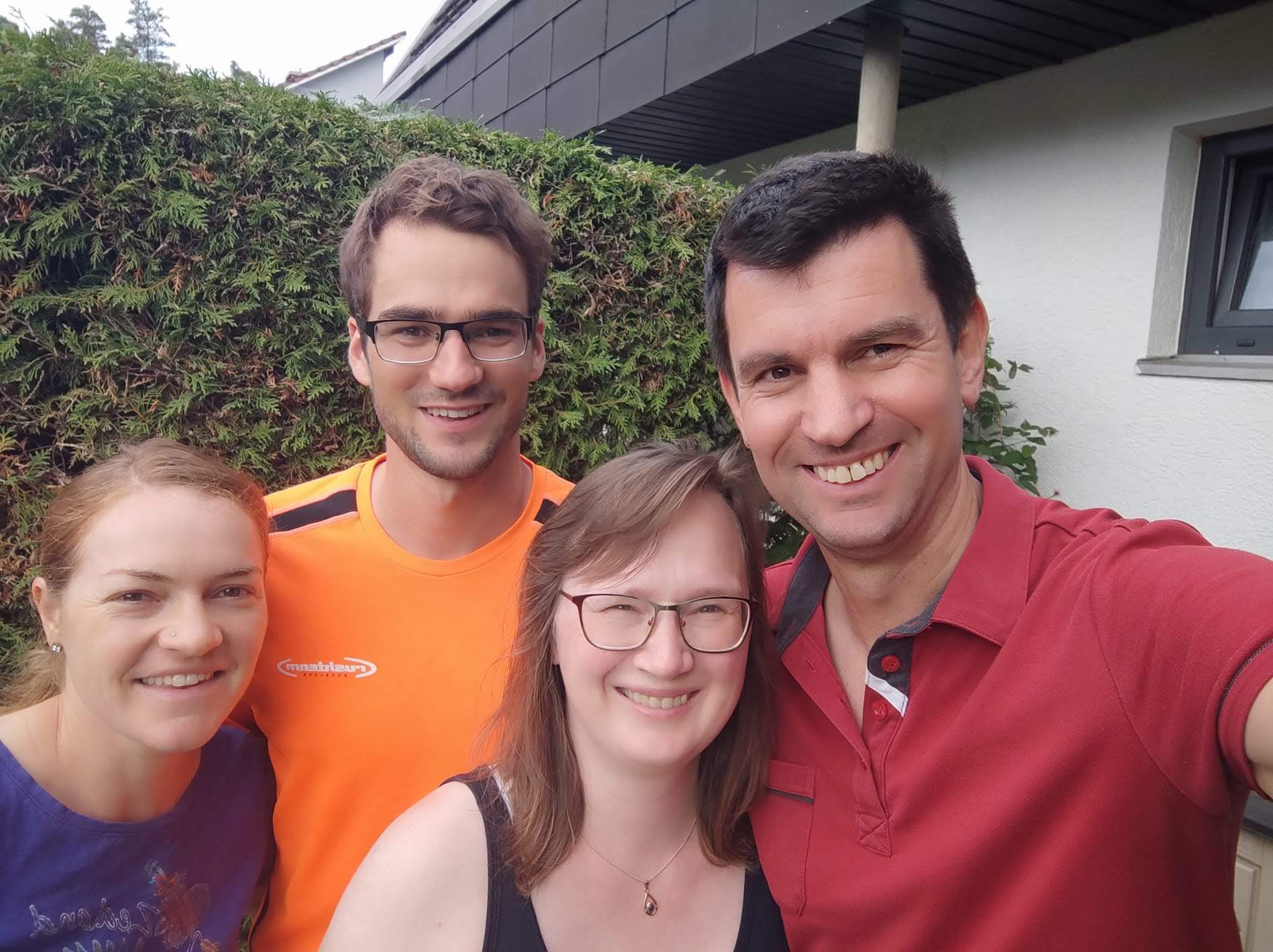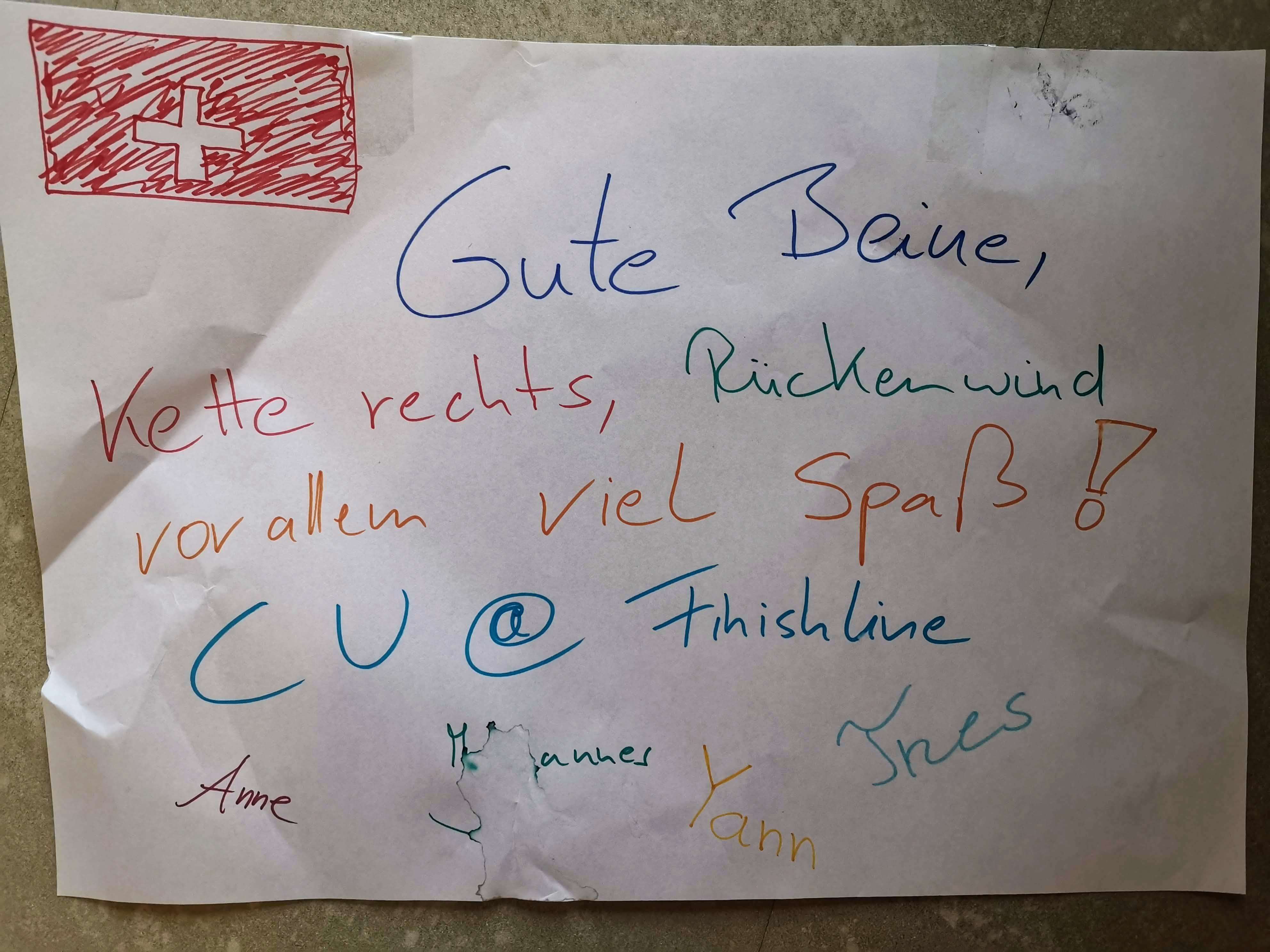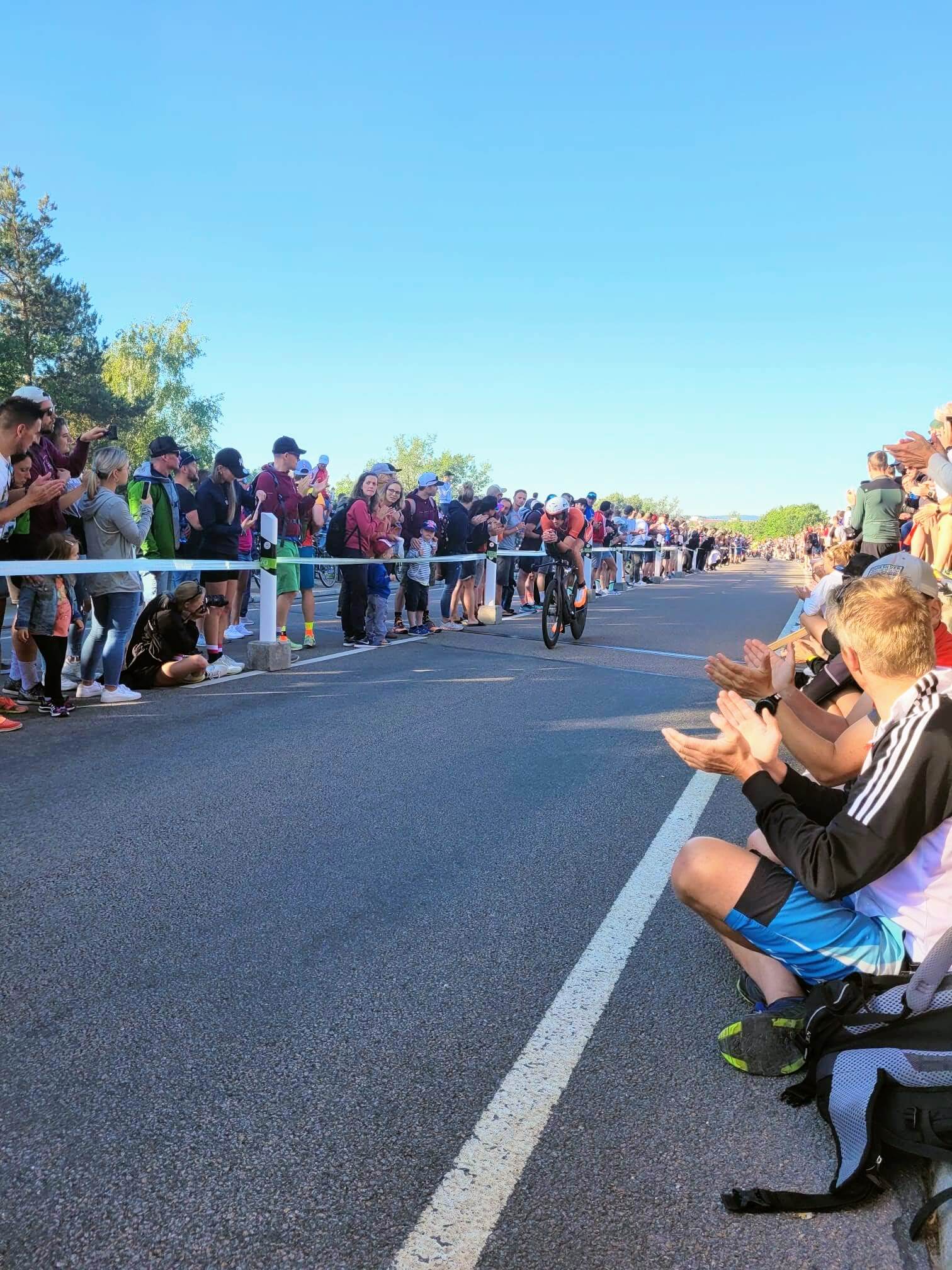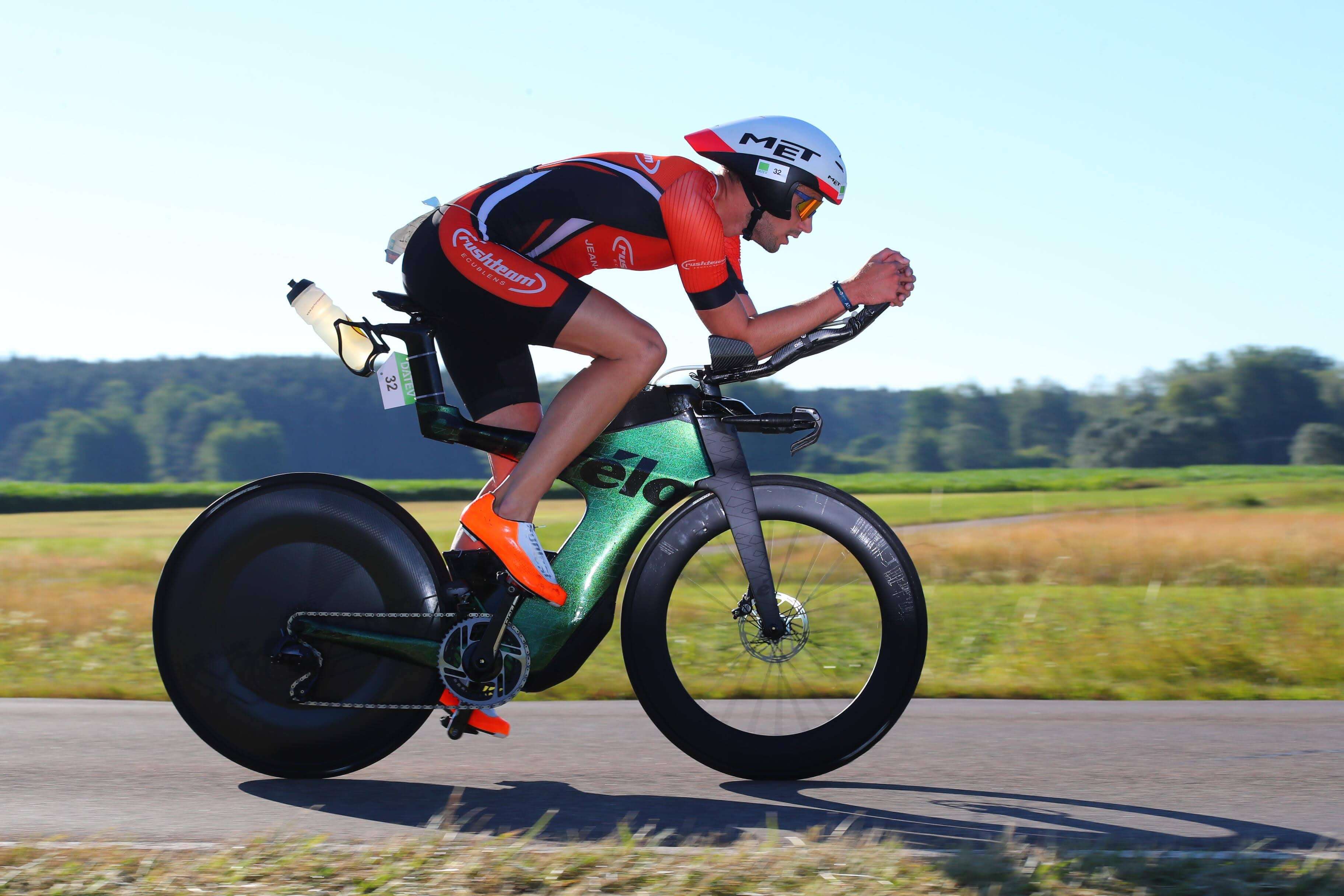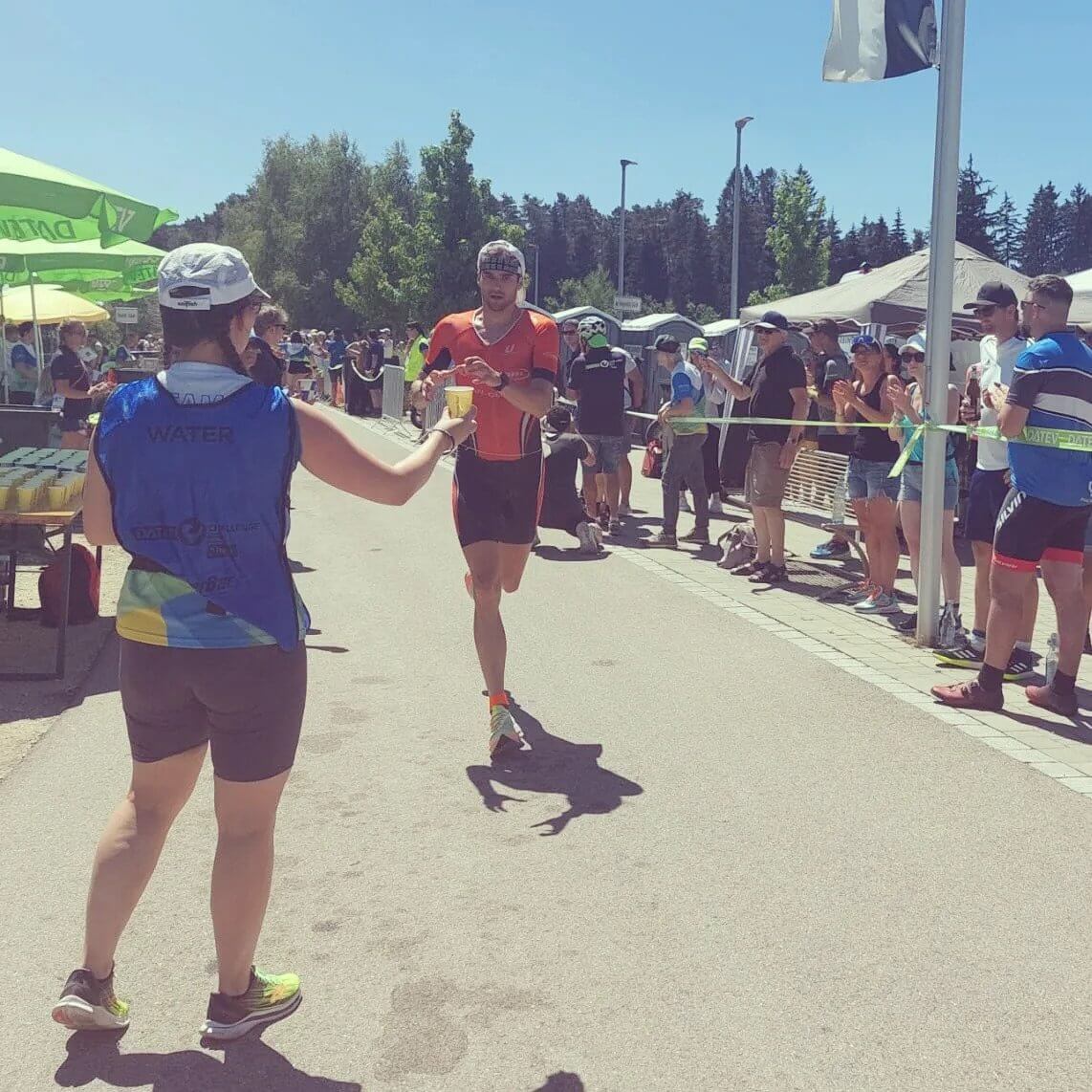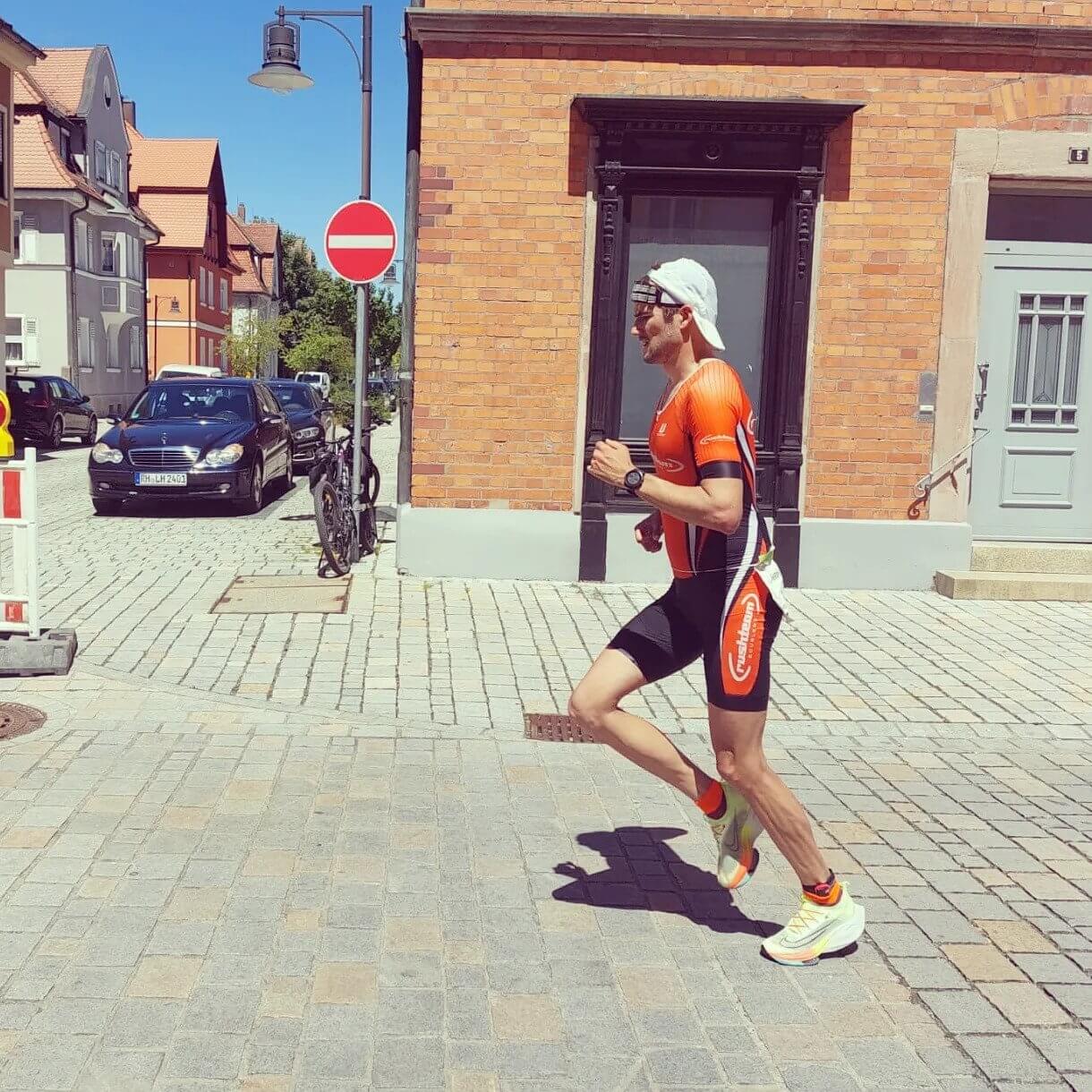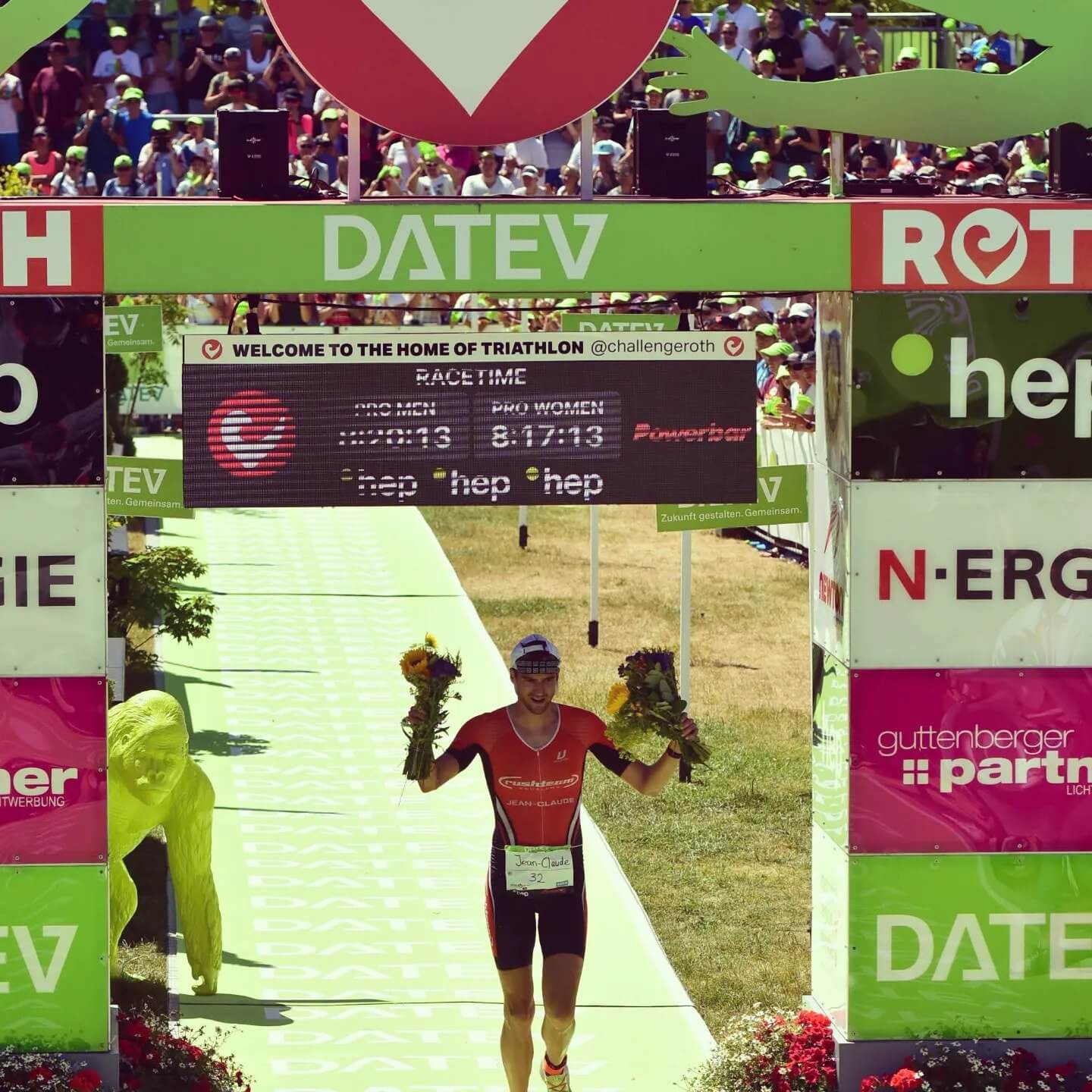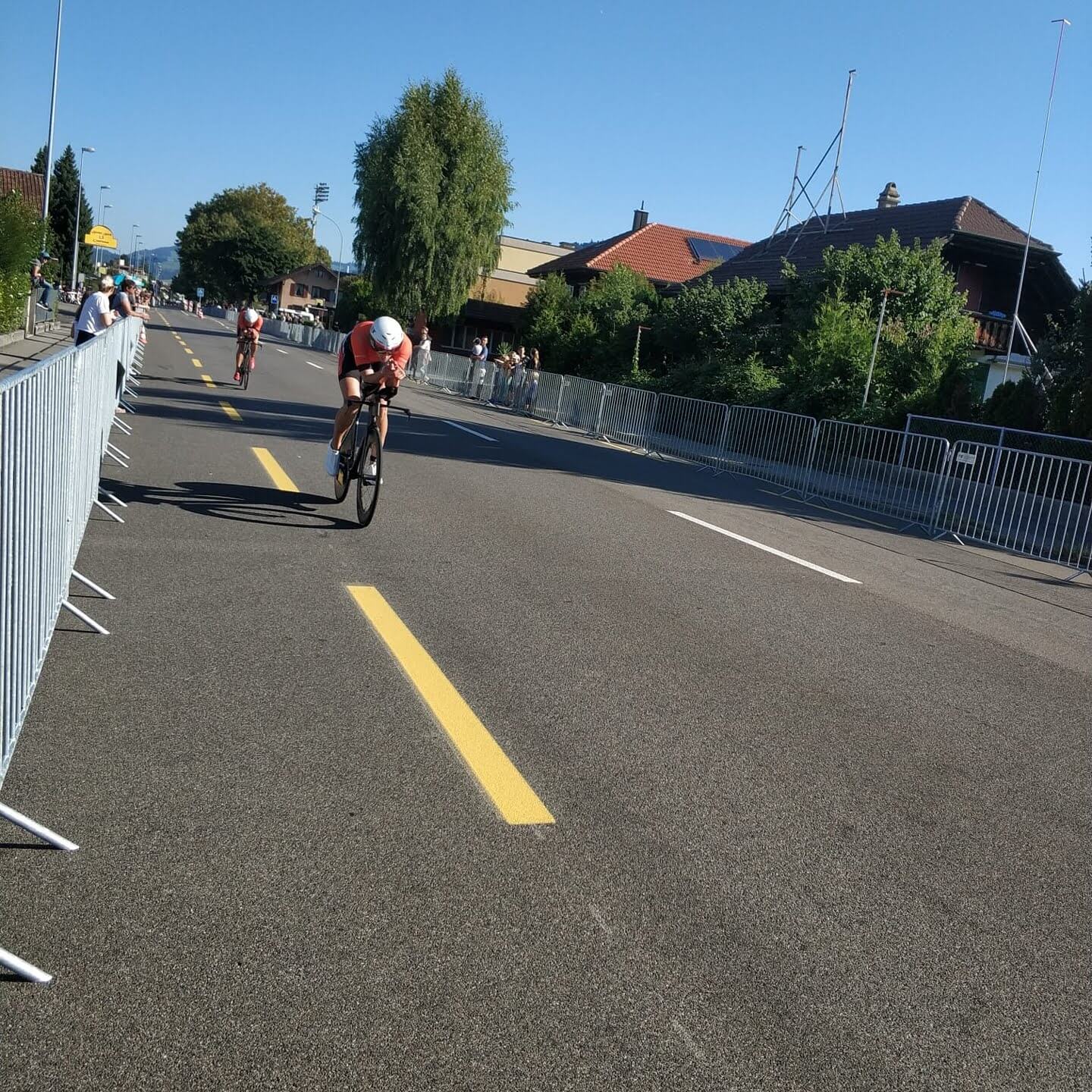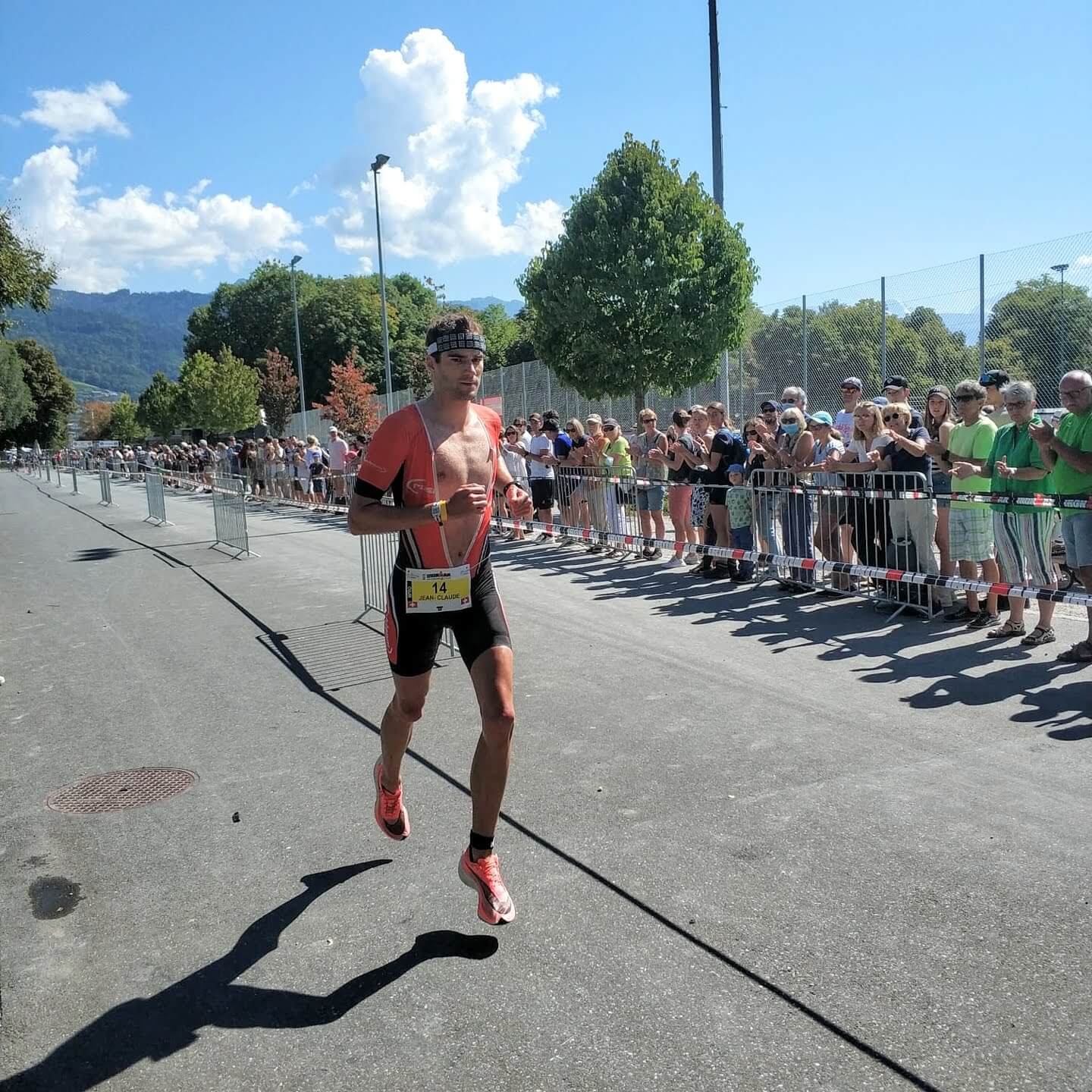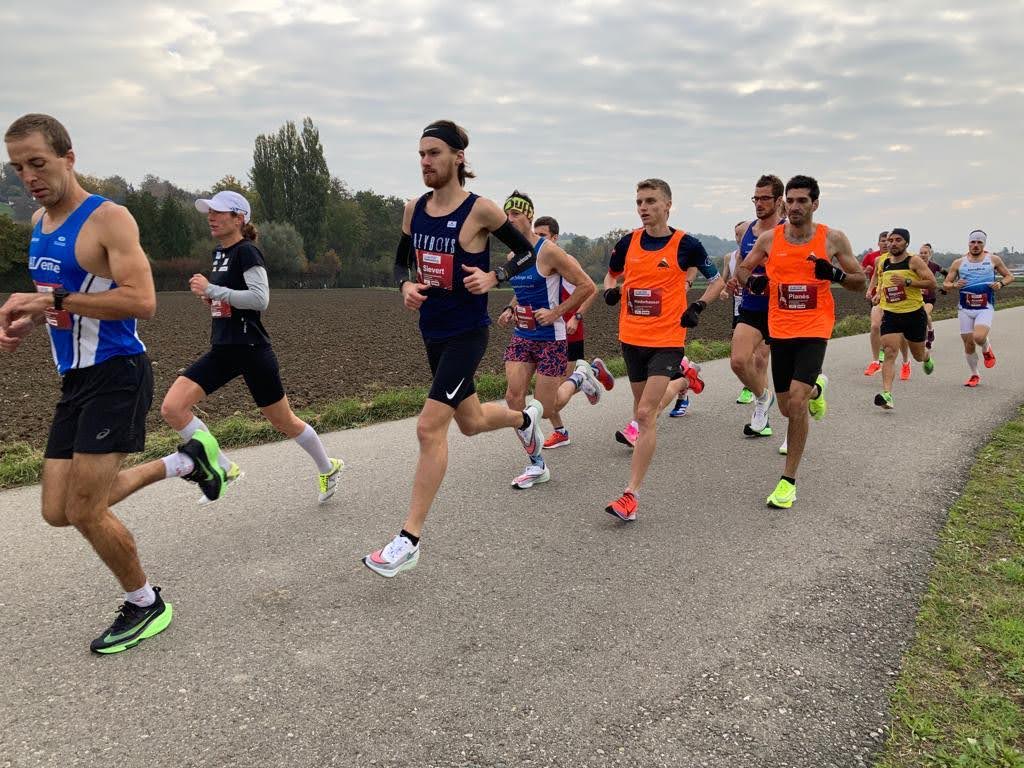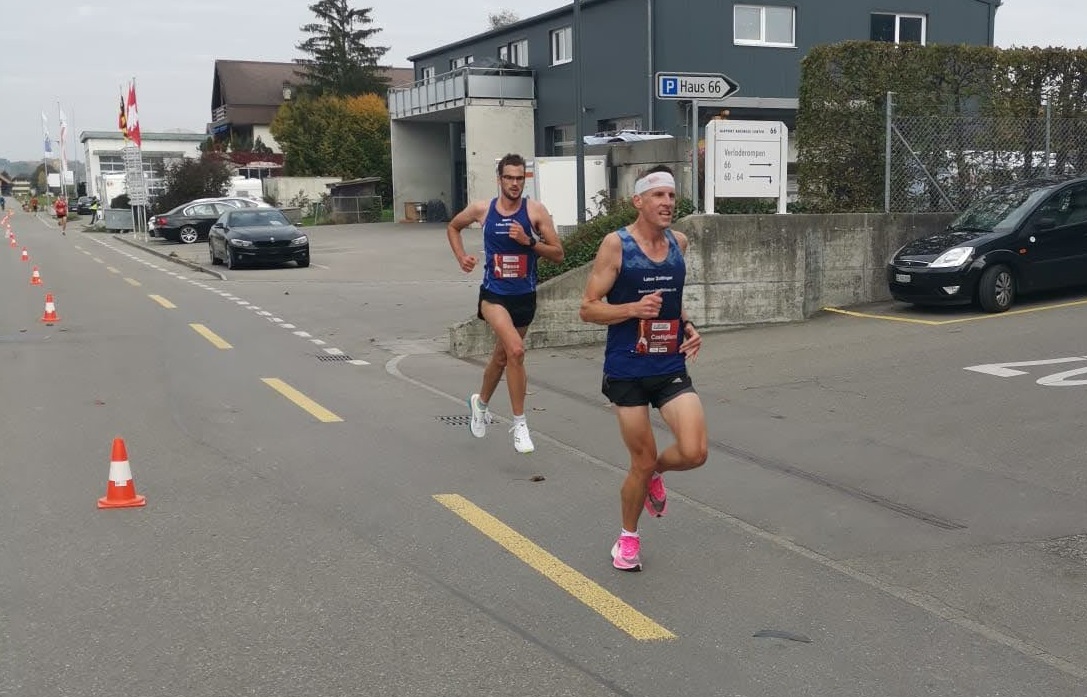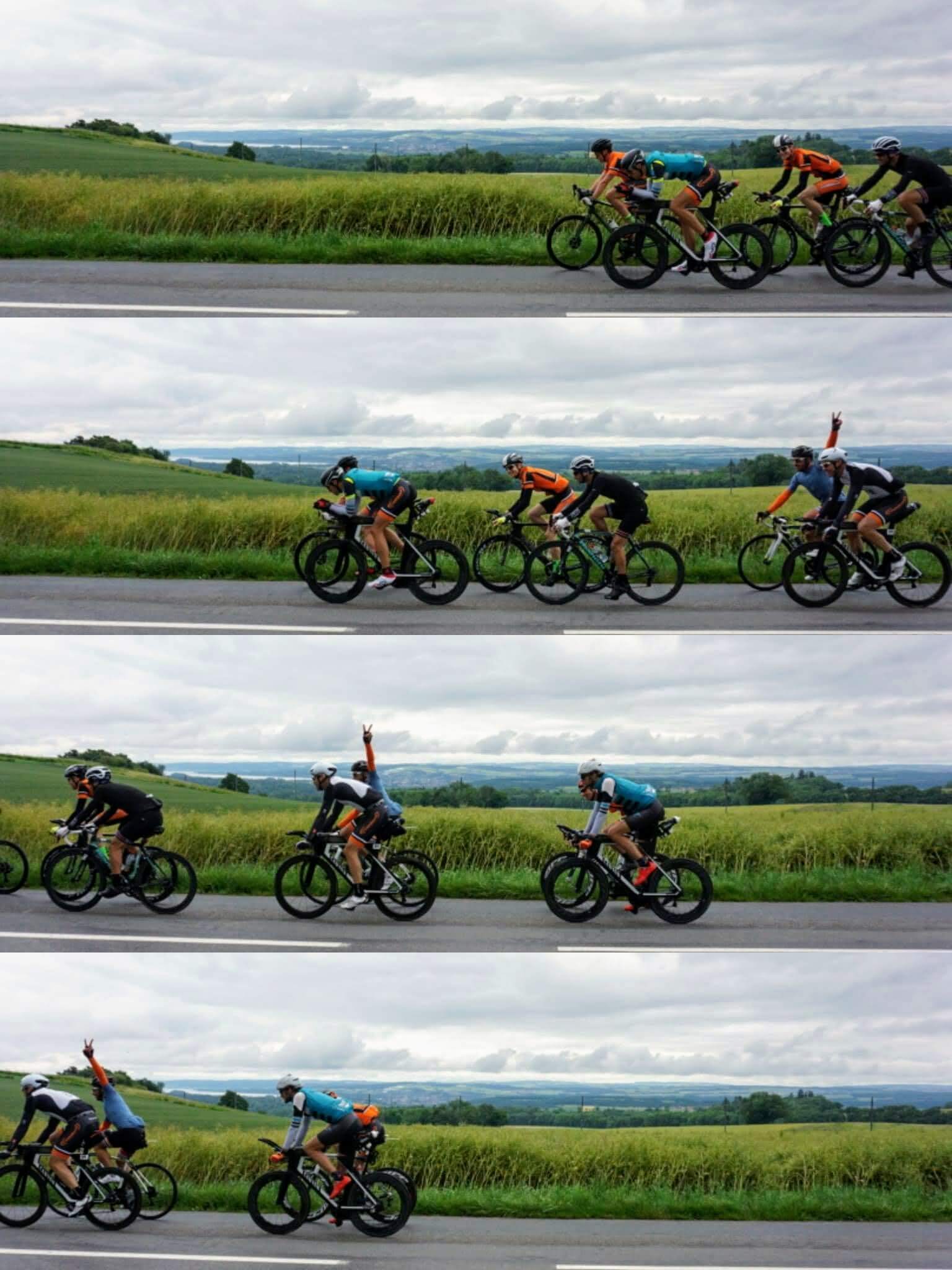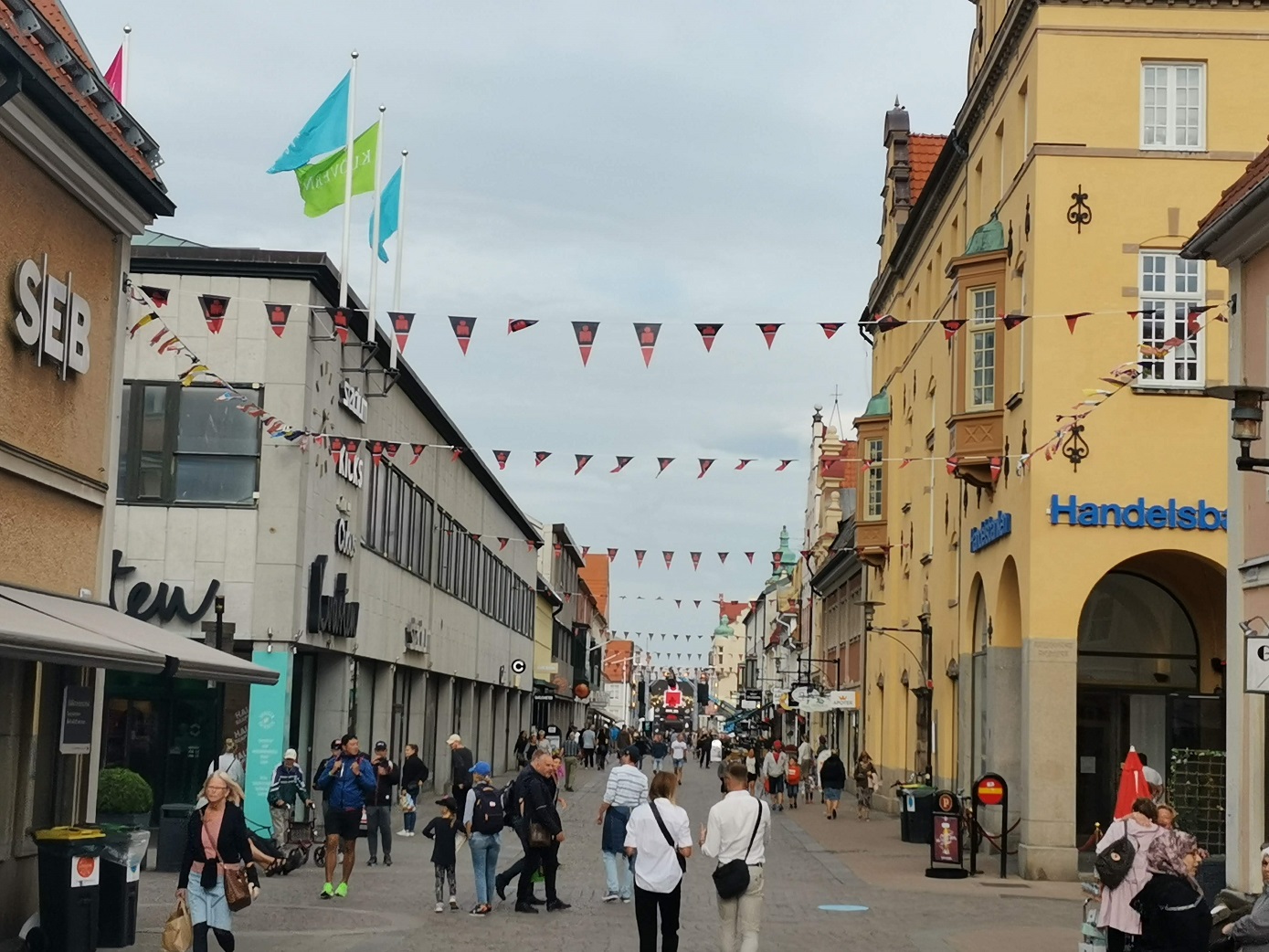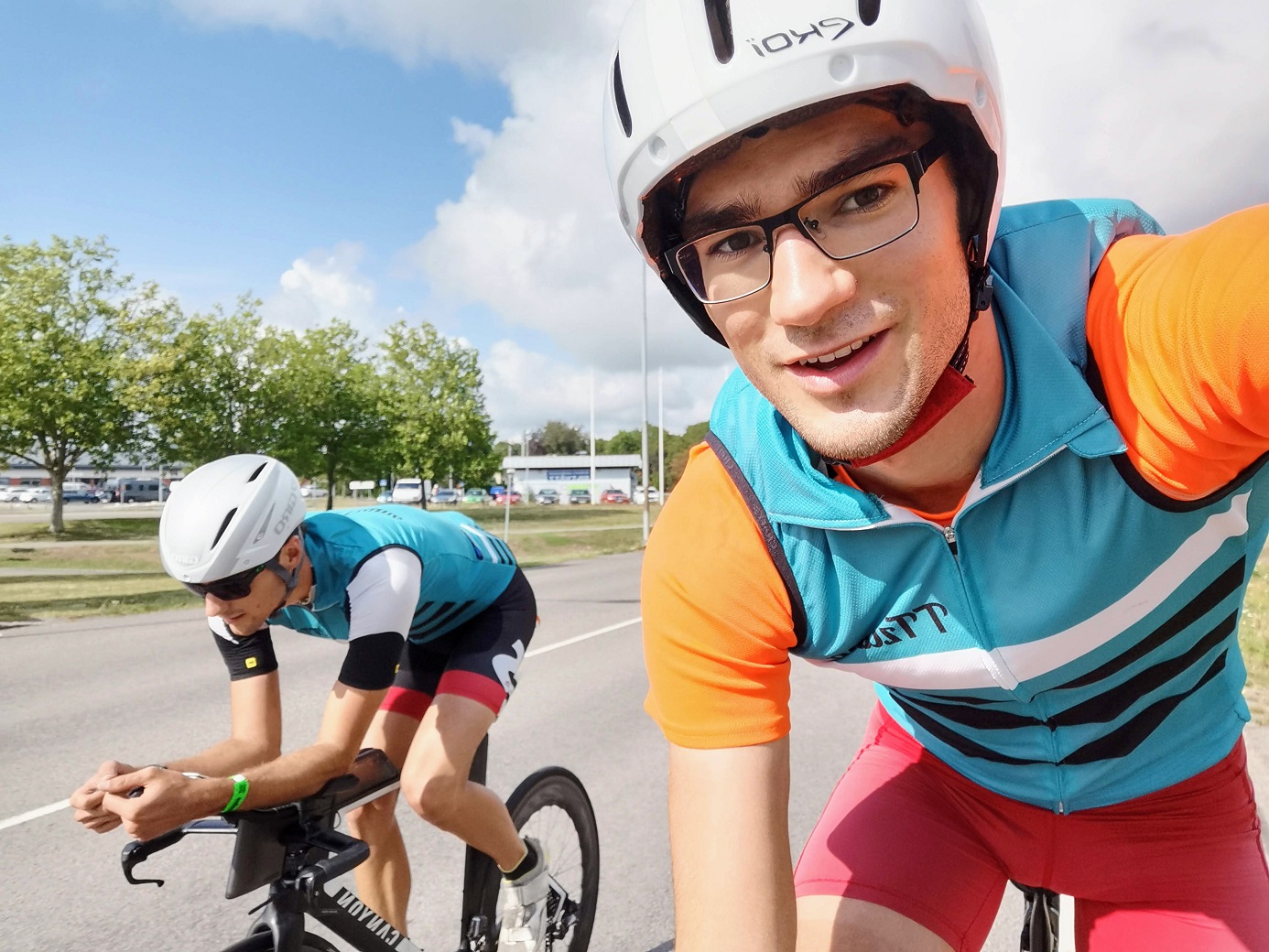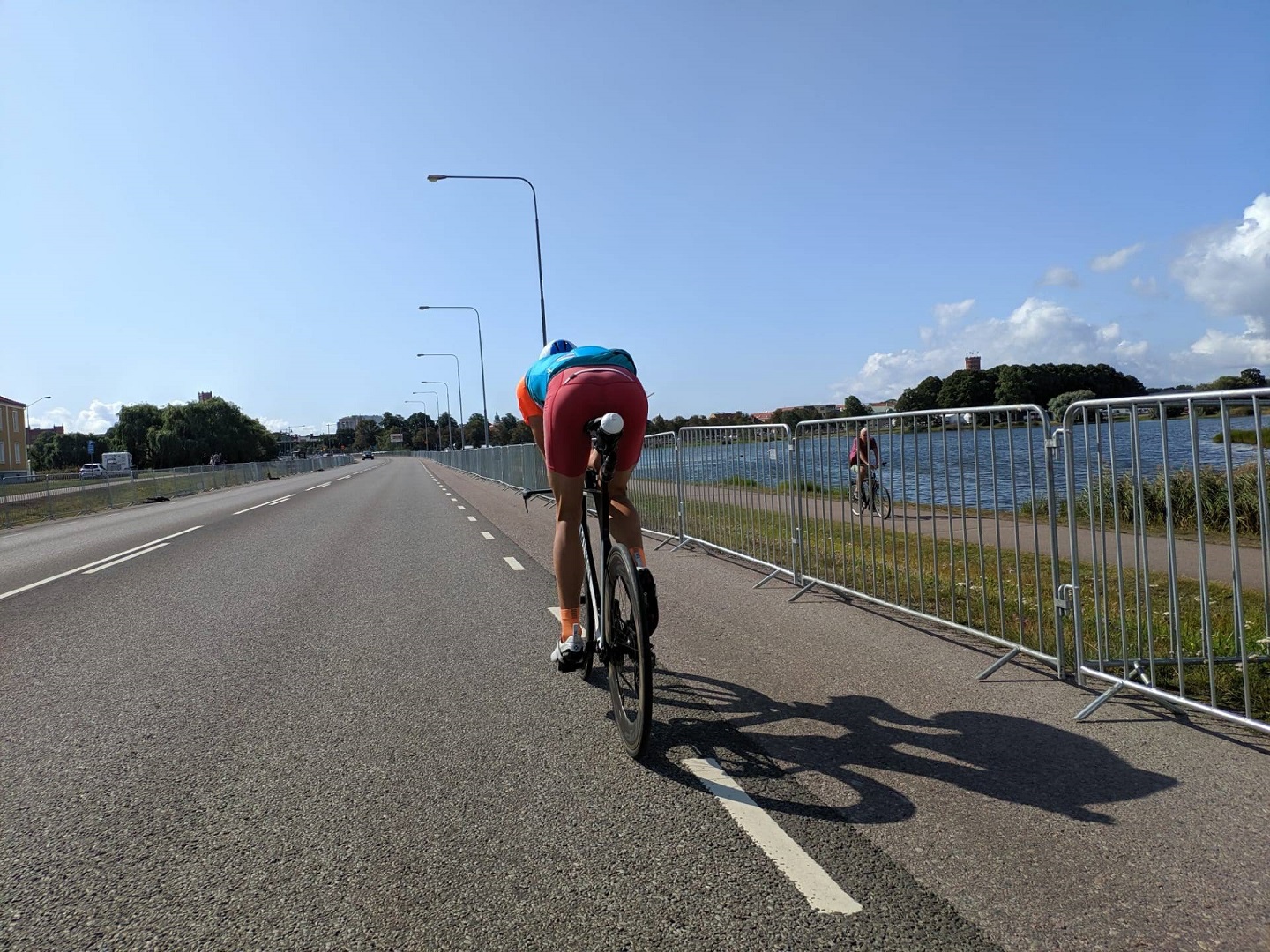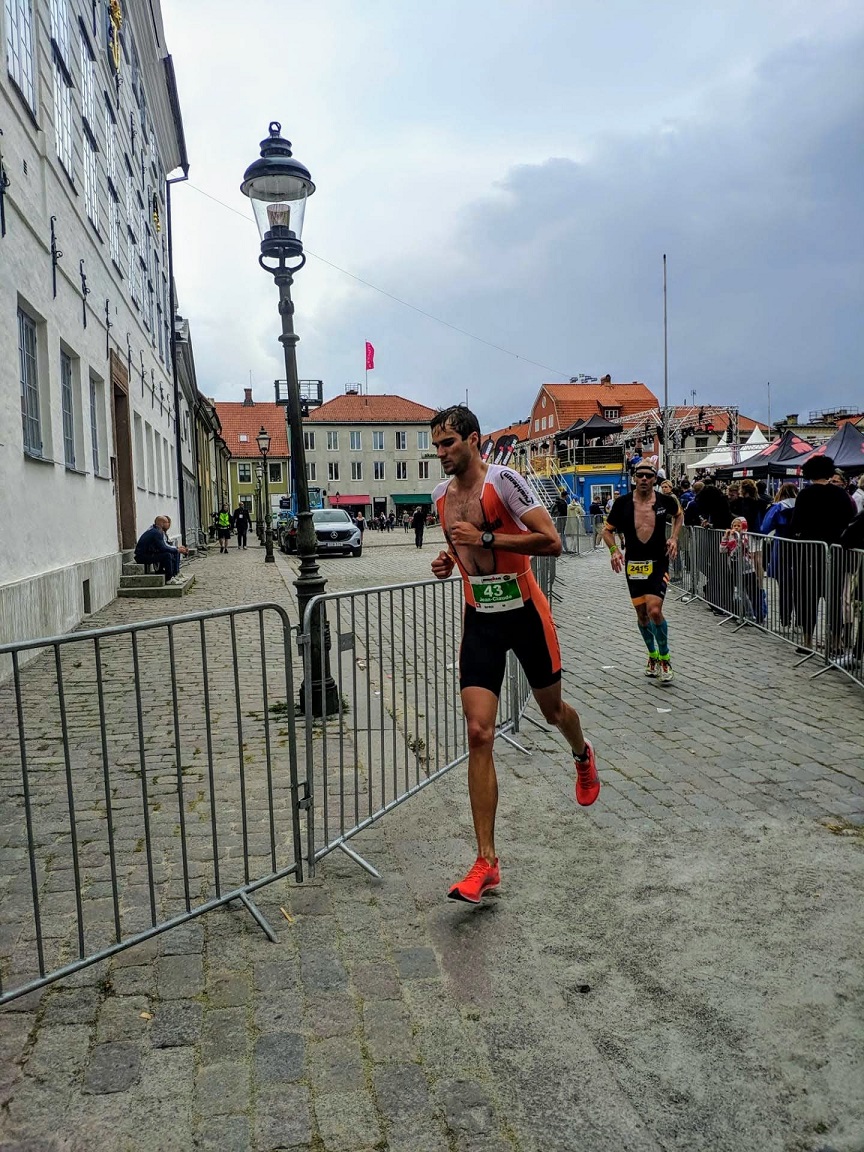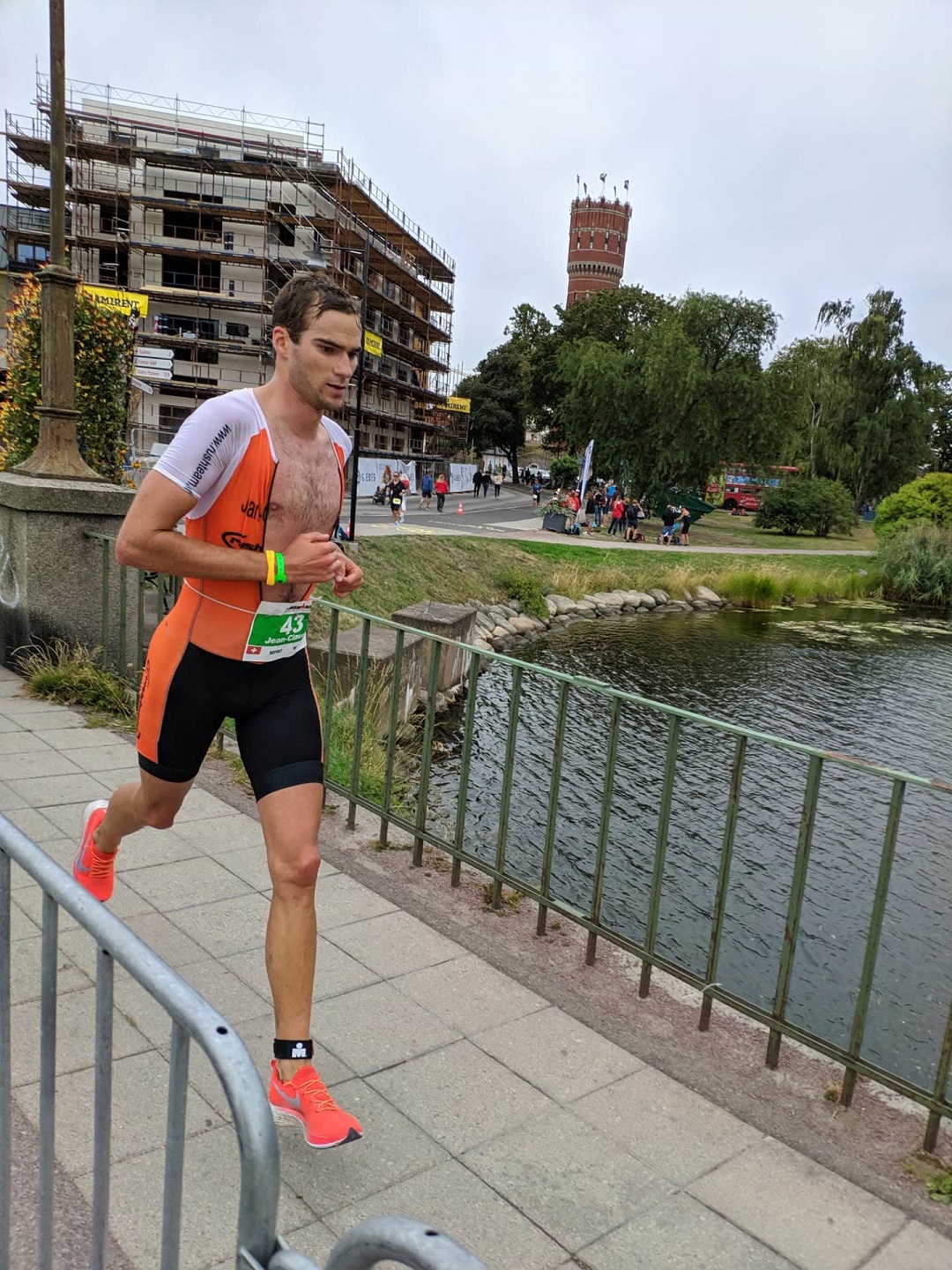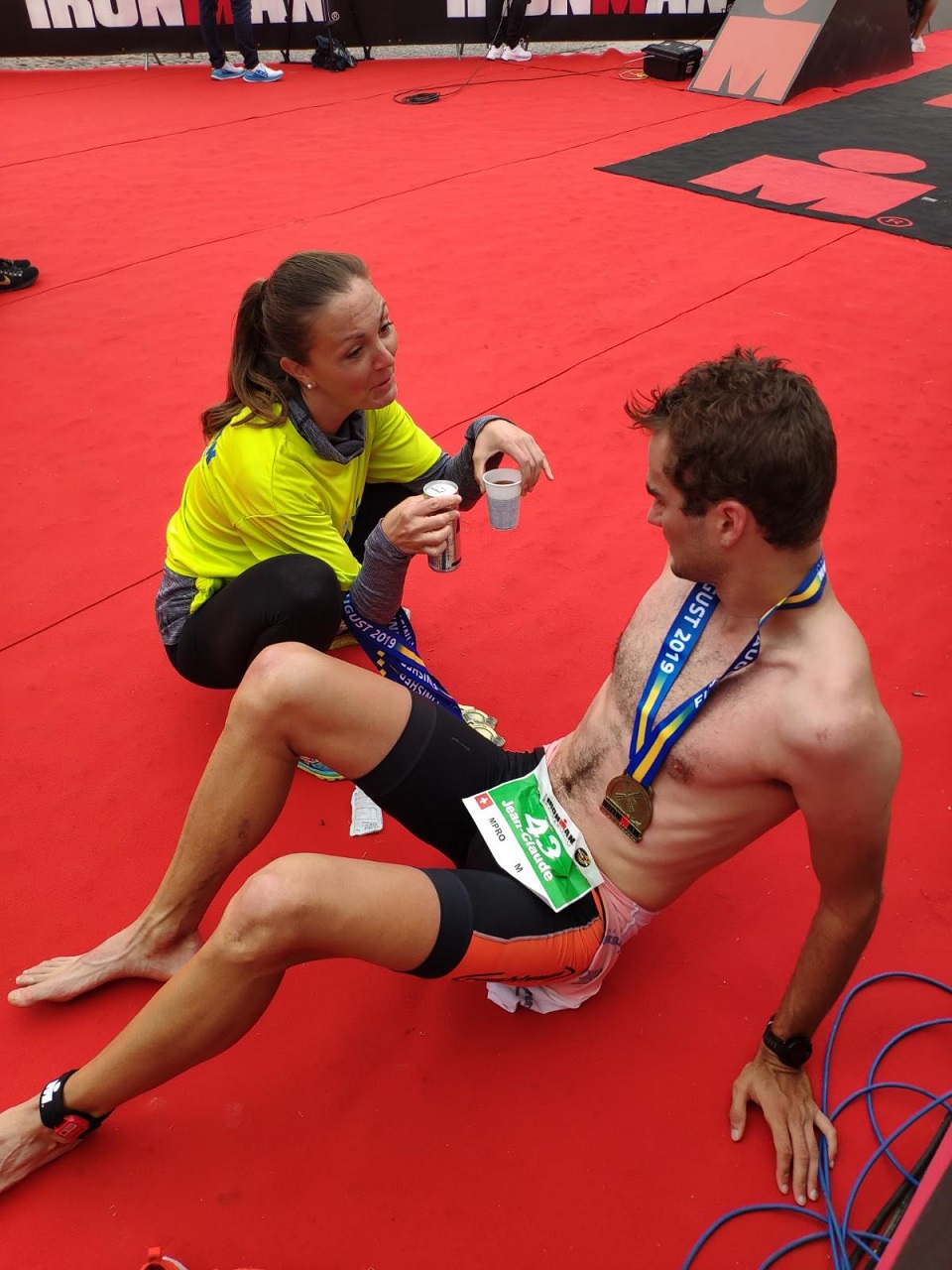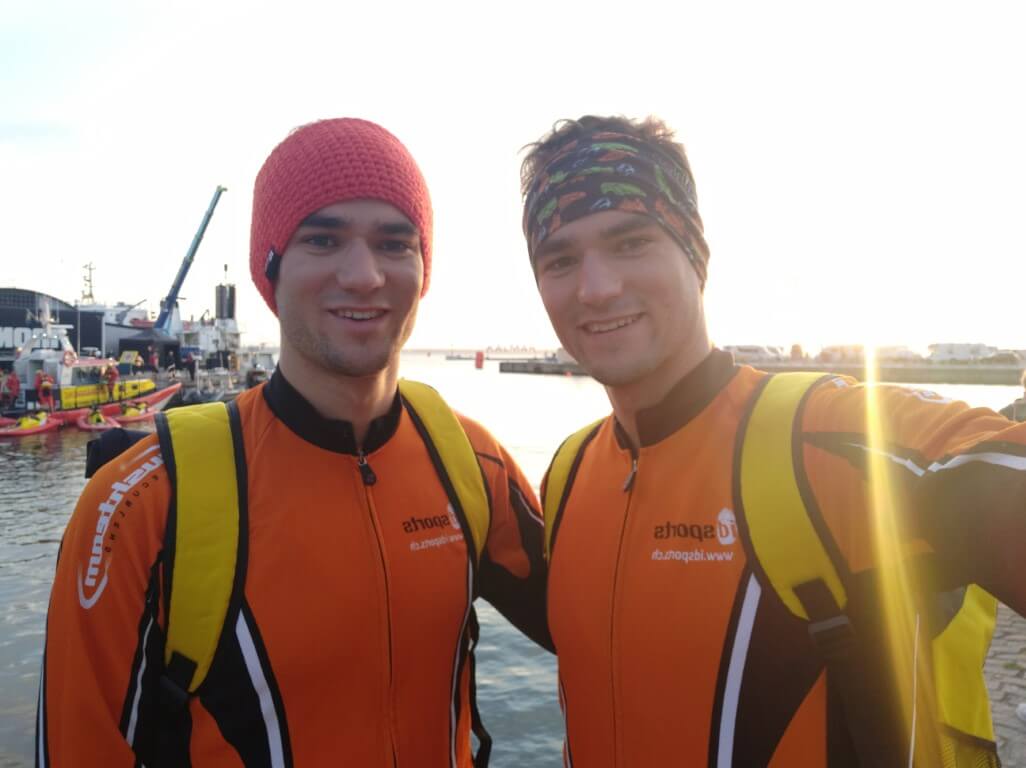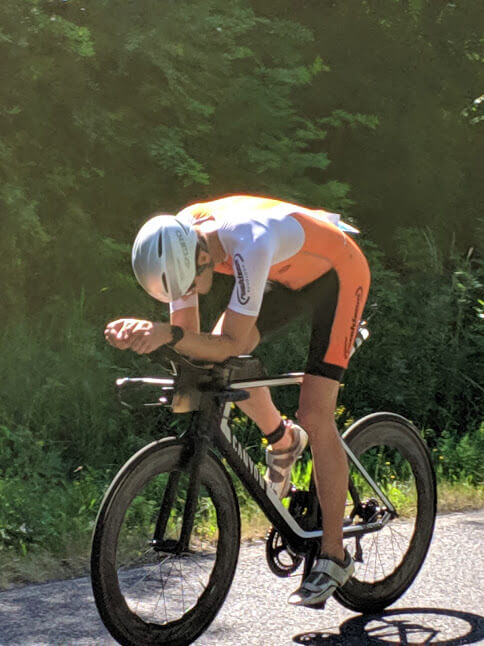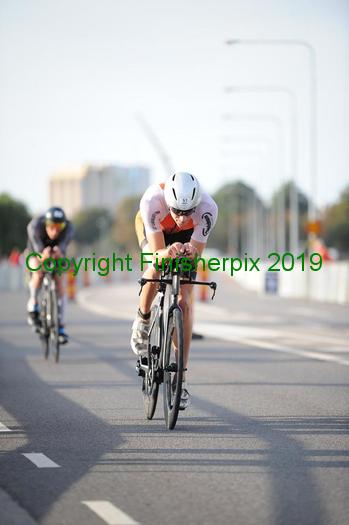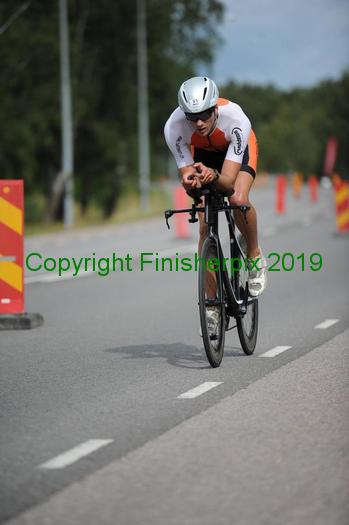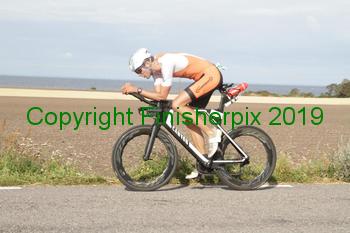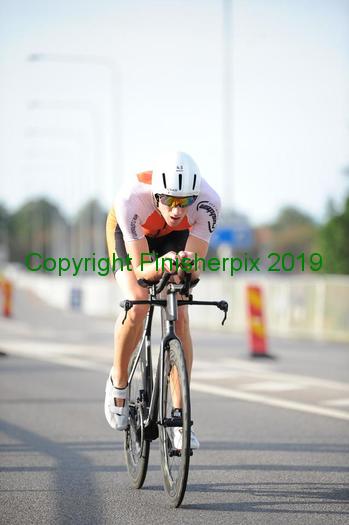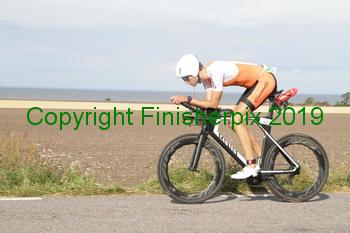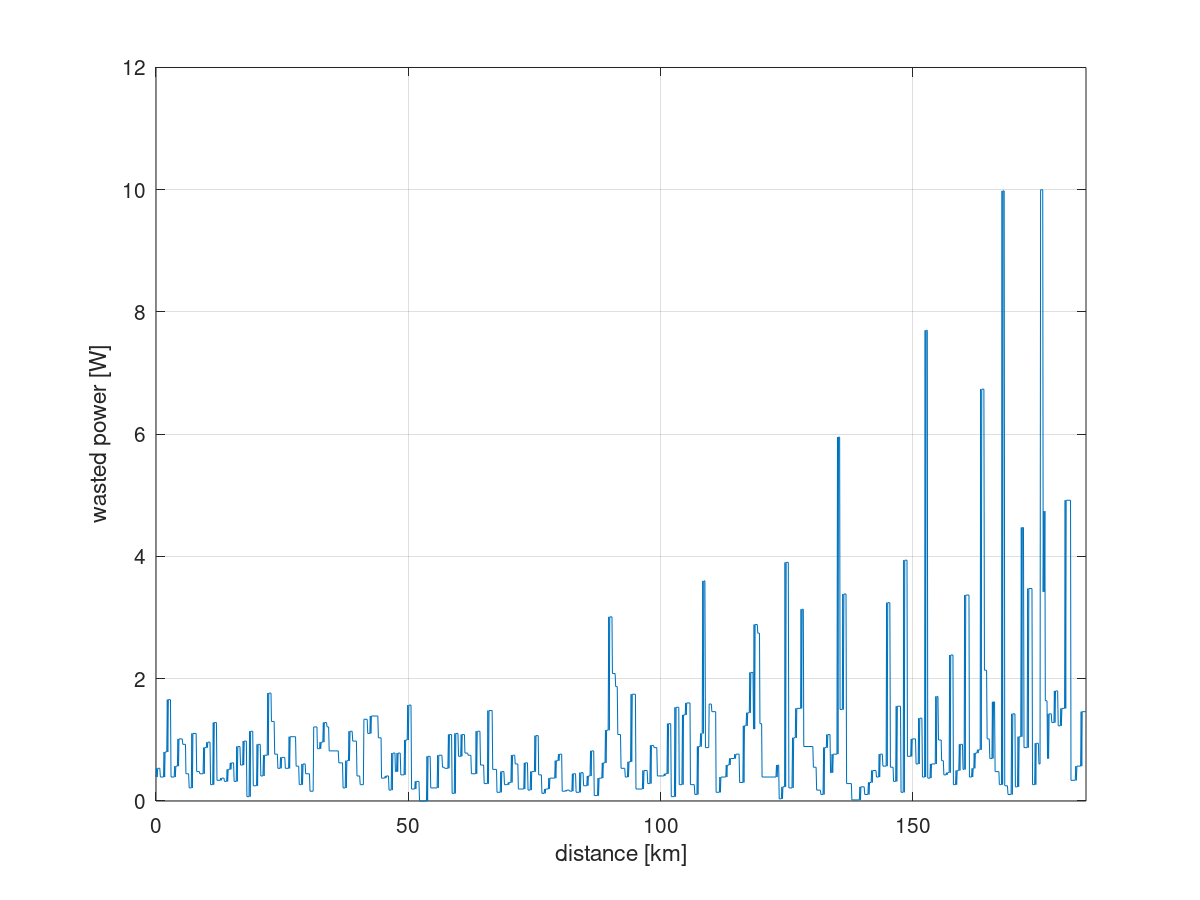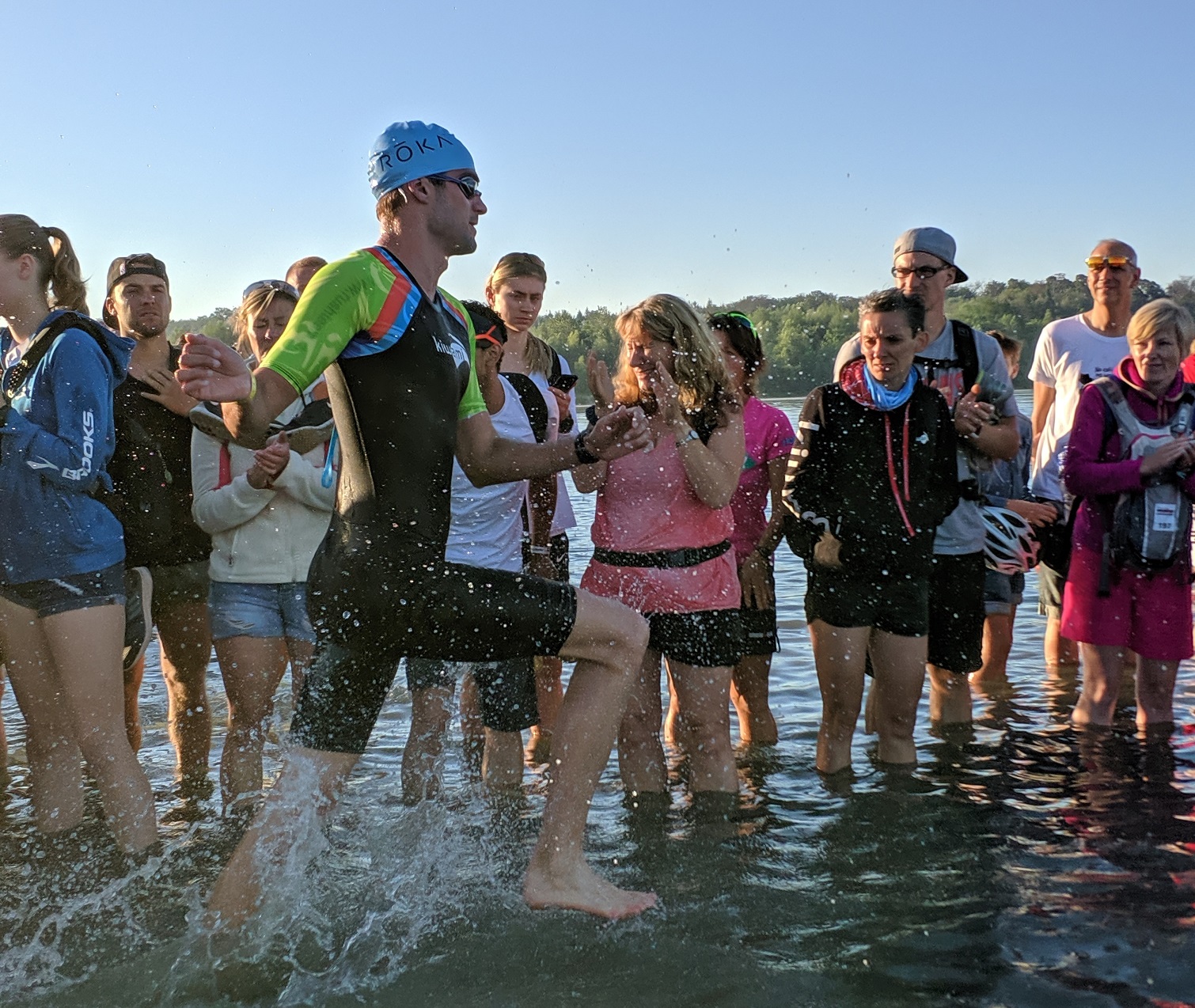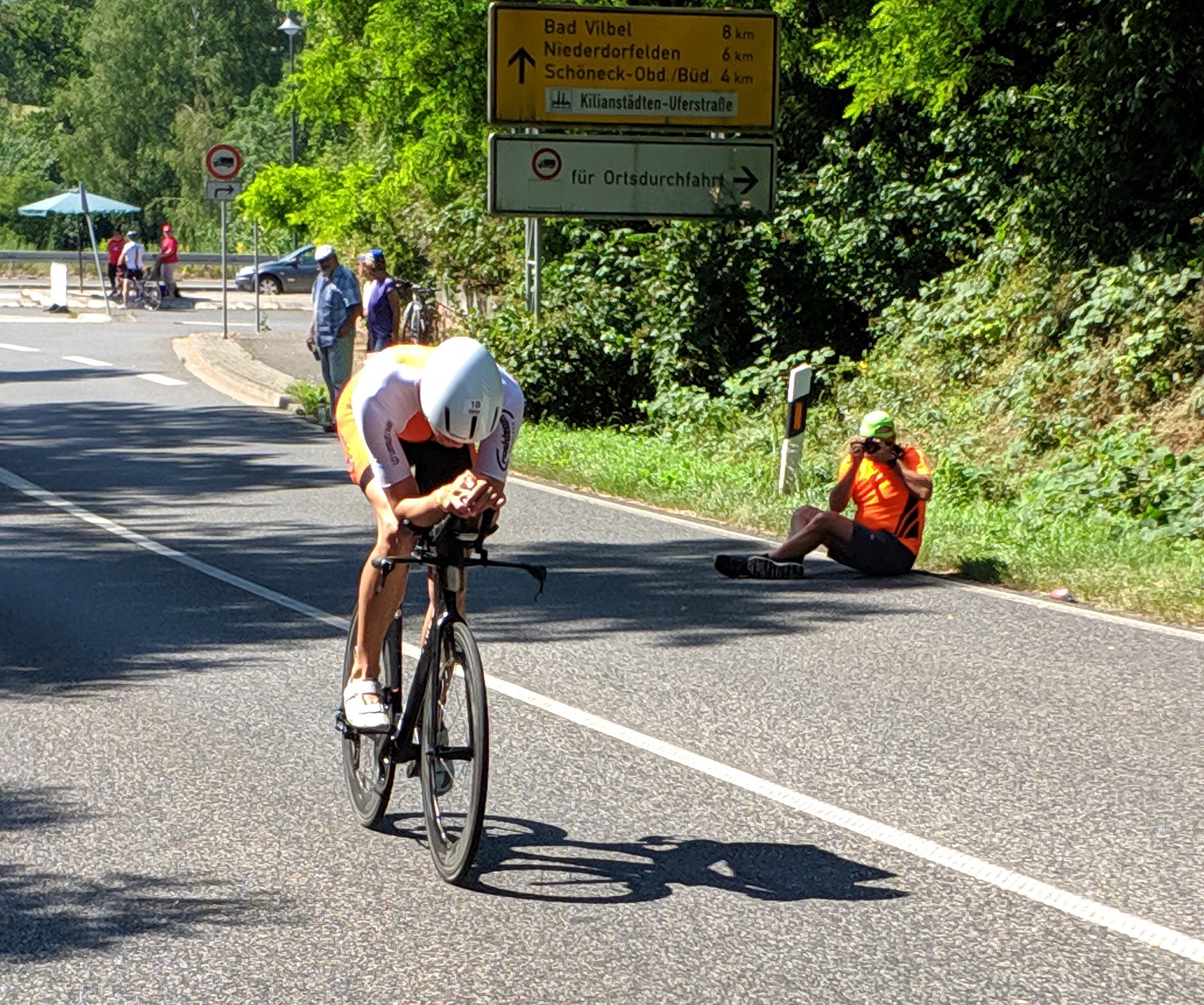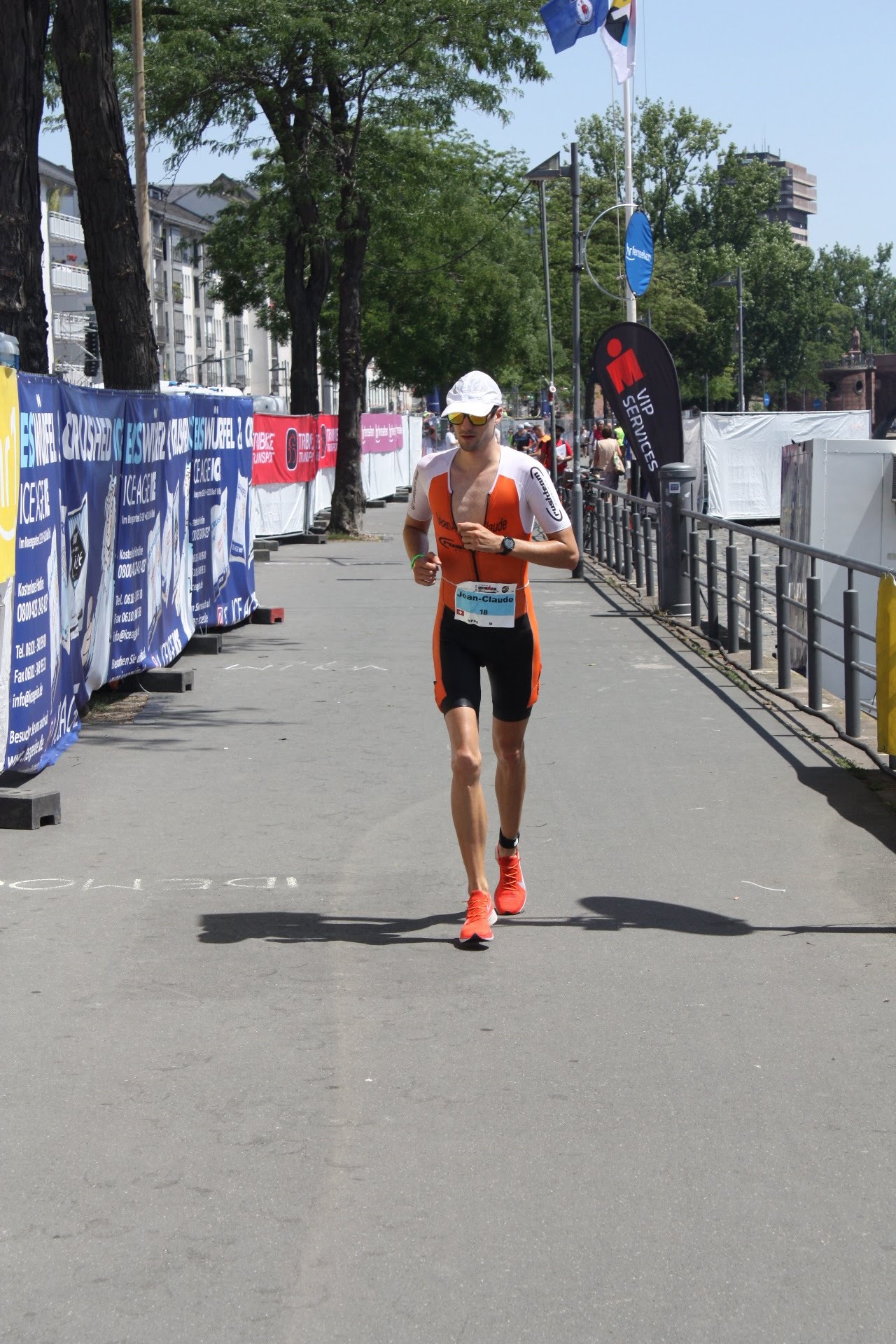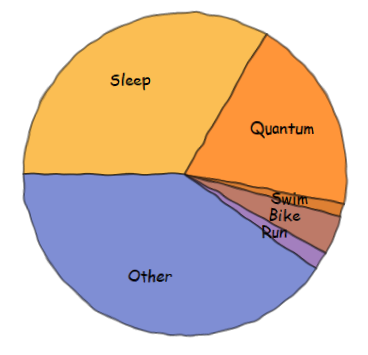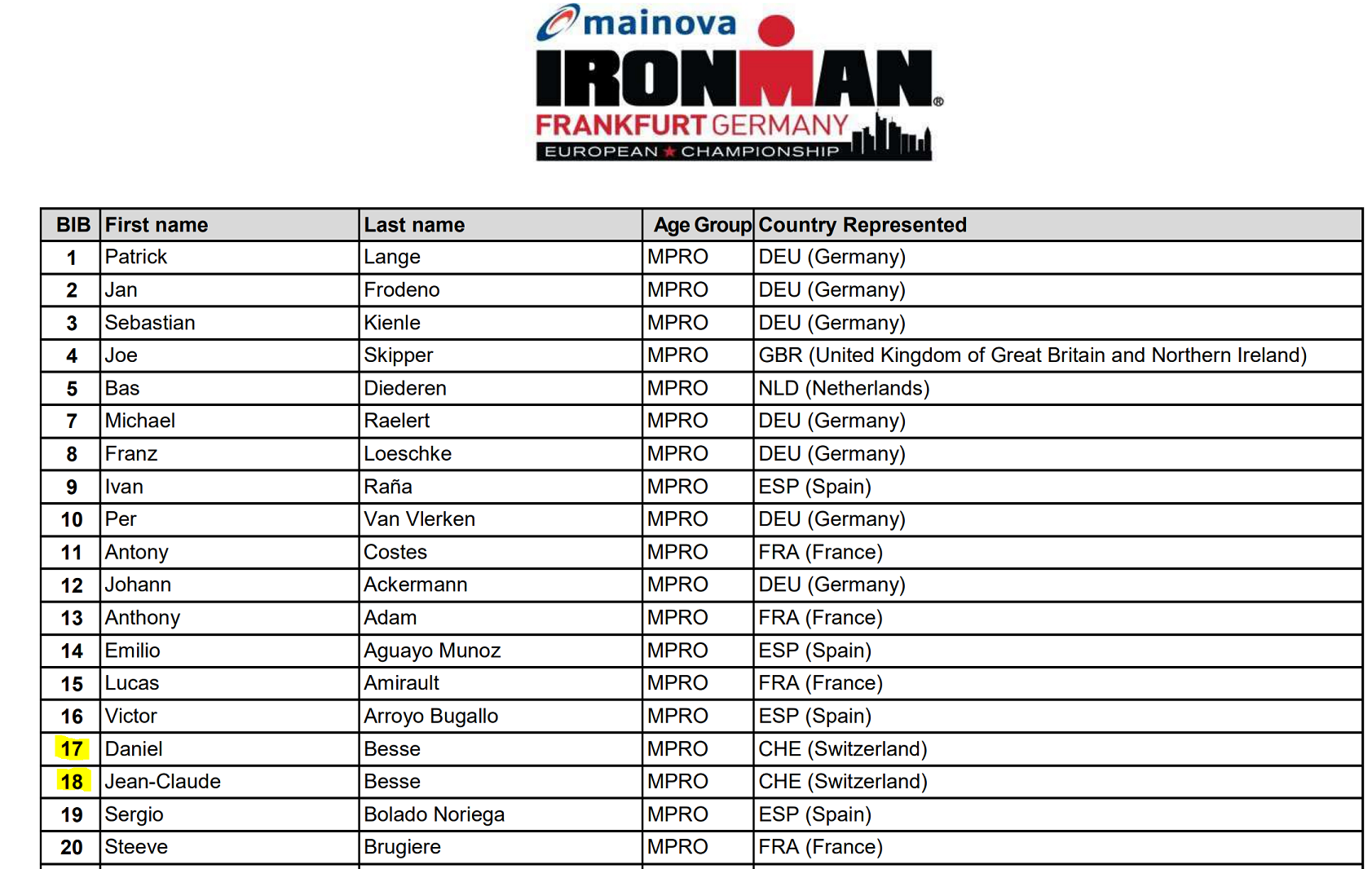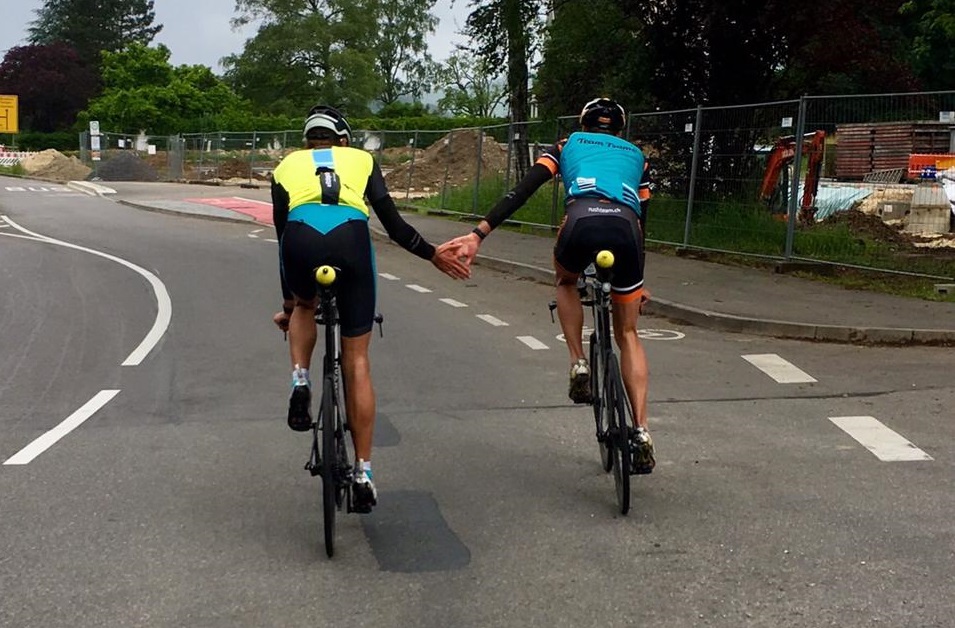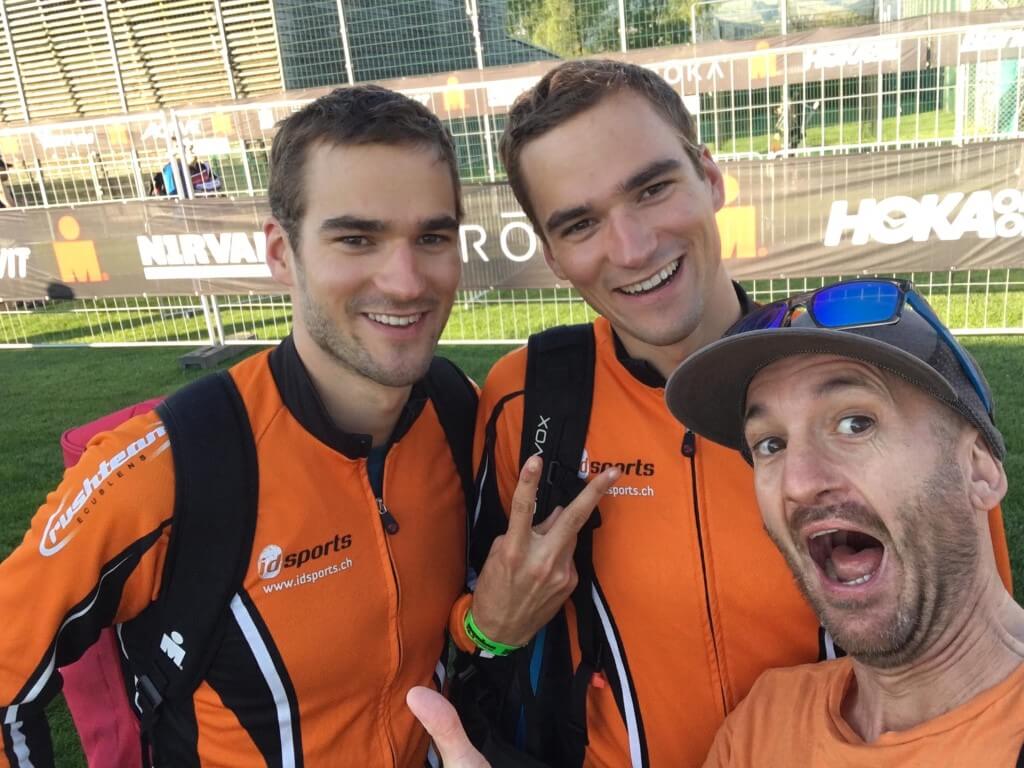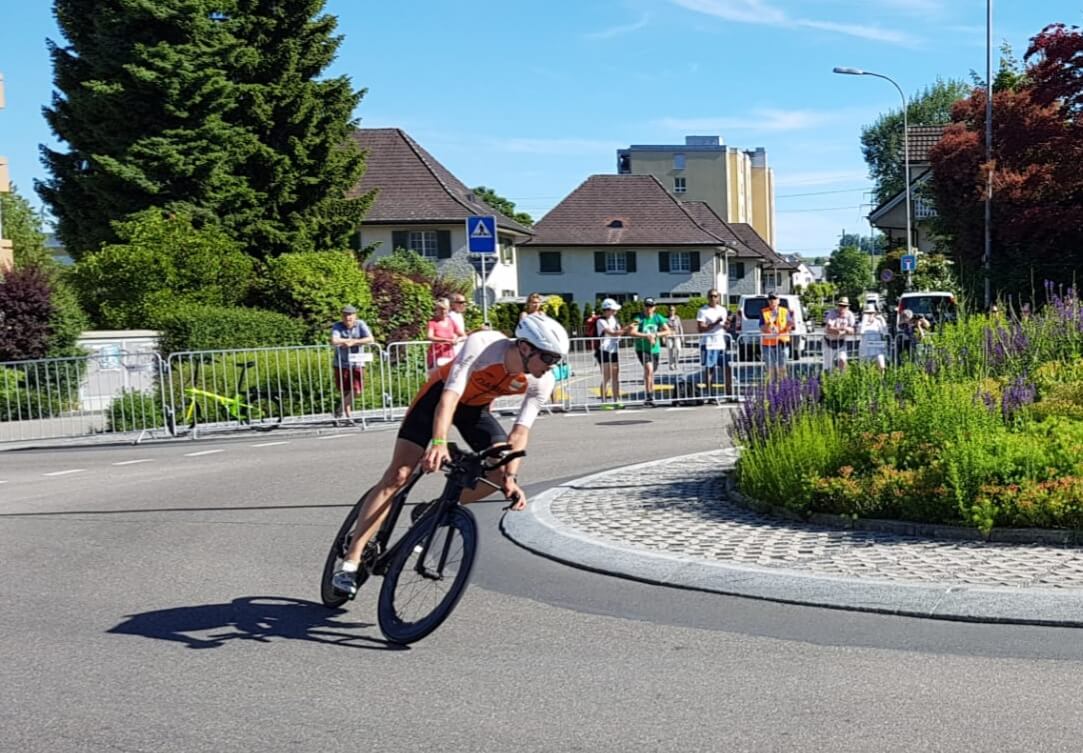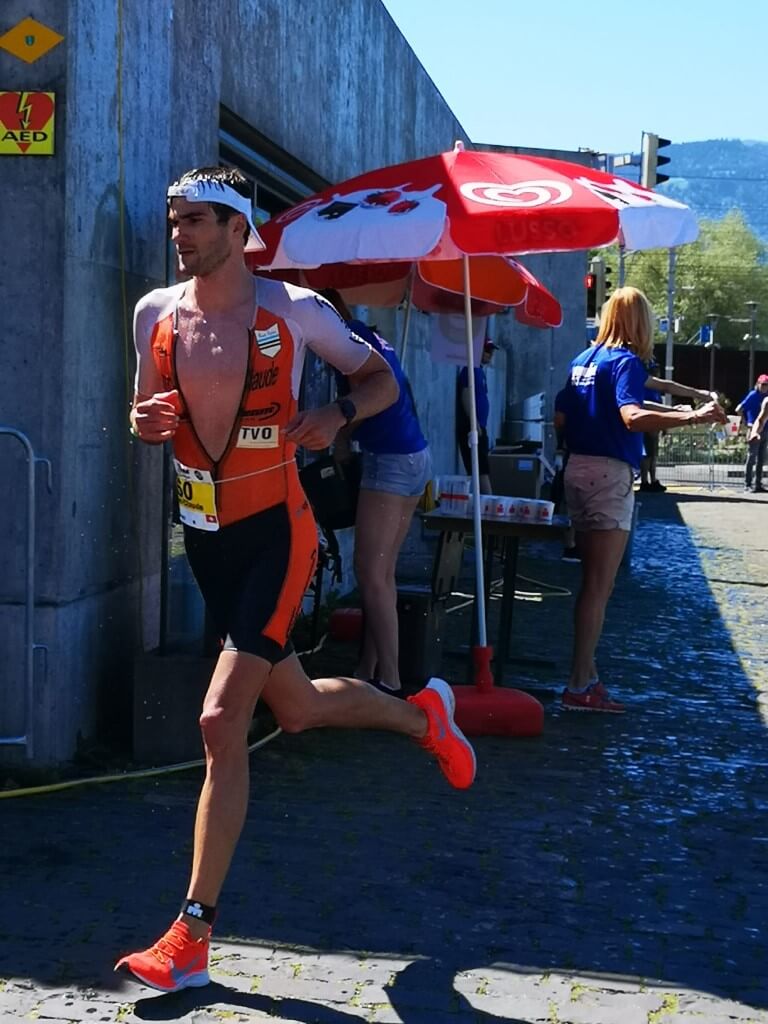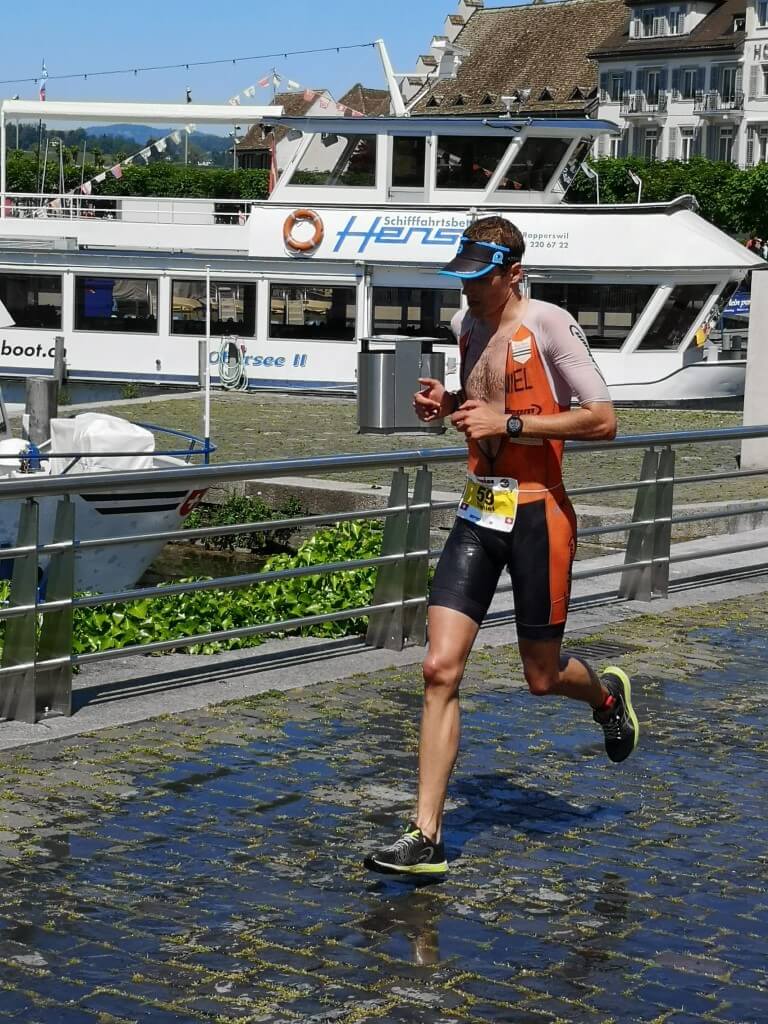5 months ago I was lying in bed with a cast on a freshly broken hand. And 4 months ago spending a snowy Christmas watching the family on skis from the roller in Davos. My PdG training couldn’t have started worse. And yet I was about to get ready. Not with anywhere close to the “recommended” 60k elevation gain over the winter season (barely a quarter of that), but a good general endurance, and the confidence that I could reach that mythical finish line in Verbier.
2 weeks ago, as Daniel got a Covid infection, the doubts started creeping in again. Our team would make in to the start line, but not without last minute wonders. The weather being also one of those.
Glacier and lack of snow
I’ll pass over the lead up to the race though, there’s enough to say on the course itself: Start at 23h45 on Saturday evening, next to Zermatt’s train station, barely after the stop of the rain. The snow being far away up in the mountains, we run with an old pair of trainers through the village, and quickly leave the civilization to climb the valley on a jeep road. Daniel is setting the pace in front. And while I say “ok but not faster” when he asks for feedback, Nico goes for a more optimistic “you can overtake and catch the first team if you want”. Needless to say, we were soon in second position of our wave, running uphill, or fast walking when the slope turned steep, in a little muddy dark path. As a tiny downhill arrived, I notice something bump on my left calf, ask Nico if he saw something fall, but assume it’s a rock. Until 50 m later, when I can’t find our gps tracker. “STOP!” We come back, spend 30 s looking for it in the dark with headlamps with no success, and decide to continue our route without. Daniel is not super happy, and makes sure we pass again the ~10 teams who overtook us then. It’s still a long race, no need to worry.

The start in Zermatt.
As we reach 7 km, at Oberstafel, we are asked to get into our ski boots. Daniel announces to the official that we lost our tracker. And he makes a phone call while we are setting up our stuff. As we would be ready to go, the official receives a return call, where it is explained that they can still track us, and we likely did not lose it. I look carefully at my material again, and indeed found the tracker, who simply slipped from my left shoulder down to the hip. Saved! Let’s go…
The start of the glacier is full of rocks, and the fresh 2-3 cm of snow are barely enough to make them slippery but not to ski onto them. We even have to cross a 5 cm high water stream, which we do without much hesitation but hoping that our feet stay dry before we target 3700 m elevation and the coldest point of the course. We exchange sporadic words. But it’s mostly “just keep going”. The race will be long, so there’s no need to stress and sweat here, but we also want to keep progressing steadily to get there…
As we reach the real glacier, 2 to 4 tracks are prepared in the snow, with little posts indicating the way. The real skimo part starts. Not too technical yet. Daniel is still setting the pace, I and Nico simply following. Soon enough Schoenbiel arrives, and looks like a portal into the high mountains. A stream of headlamps ahead, the first stars pointing just above Tête Blanche. A few military helpers checking that our knots are correct. We will be on rope until Bertol. I put my camelbak, who was taped to my back but fell down, inside the backpack. It will quickly freeze and I won’t have anything to drink for the next 3 hours.
Technical skills start here, at least for me. Daniel is overtaking teams from the previous wave left and right, making kick turns in the slope, switching tracks as needed. I’m doing all that, while dealing with the rope getting stuck on a track indicator, below my or the neighboring teams’ skis, and trying to adjust the pace to keep the balance between tension in the rope in front and behind me. A few mistakes, and maybe slight non-ideal adjustments in my bindings, lead to my left ski turning to descent modes 4 or 5 times. Annoying. Every time it involves shouting to tell Daniel to stop, removing the ski, turning the binding, putting the boot back in, getting started again, and quite likely restarting the overtake maneuver. But we’re making steady progress.
Stockji is the next checkpoint. Ski on the back, a steep couloir to climb (usually the route goes around, but there was no path without crevasses this year). The military helper guides us to the far left staircase in the snow, still empty, and off we go. Step after step, looking once down to the valley with the halo of Zermatt already far away, and lots of tiny headlamps along the glacier. Mostly concentrated ahead though, both poles in one hand and the rope in the other. As we put the skis back at 3000 m, we are advised to “cloth up now, the wind will pick up as you reach the summit”. We put on a wind stopper. There is still 600 m to climb. Not nothing. Especially at this altitude. The pace drops a little. I don’t have much time to evaluate where the summit would be, since the kick turn densify, and with it my needs to have the rope under control. Too bad the elastic along it were not allowed this year.
Suddenly the slope weakens, and as I look up a halo appears just behind a pass. Tête Blanche clearly visible in front of a starry sky on the left. A tent with sanitary. Medical people analyzing our faces to decide whether we’re good to go or should do a warm-up break. We remove the skins. Close the shoes properly to ski (another error here, should have prepared it properly at Oberstafel, and not have to remove gloves here by -25 C). Daniel helps Nico close his backpack and jacket, since his hands are frozen. Not sure we even said anything, but in a concerted look we just started skiing. Waiting here is freezing for no good reason. Everybody around is shivering cold but somehow prefers to stop for bouillon rather than moving on.
The start of the descent is just a straight line, at very little slope. Straight ahead. Easy peazy. A good meter or two of rope in the hands in front of me as safety. As the path turns slightly right, the end of the descent is already in sight. Teams in front of us make plenty of turns. Daniel takes the right decision to go almost straight, braking in V-shape, much easier for us behind. Nico get the rope in between the legs. But as he shouts quickly, and I relay that to Daniel while releasing the slack, nothing ensues. We entangle our rope with a pole of a competitor, but once again deal with it quickly and release ourselves. Time to go up briefly again. Hands still half-frozen, but functioning well enough to put the skins on. Jacket below the windstopper, and beard, turned white from the frosted sweat. Bertol is splendid in the night. We don’t have much time to admire though. Time to descend some more. Much more difficult conditions here. A narrow start, frozen, gliding sideways, followed by an open track with lots of bumps, stones, and frozen patches. A little minesweeper game, with blue flags indicating the right path, red ones dangerous places, and yellow ones checkpoints to reach. In the darkest night one can imagine. With a small headlamp illuminating the few meters in front of you. At 25-30 km/h. Of course at some point we all went through a stone. One was way bigger than expected though. My skis get stuck on it, I roll face down to the snow patch behind, before salto-ing and ending my path face down the slope, feet upwards, on my back, and with a single pole in hand. I quickly realize that nothing happened, that my skis are still here, and that Daniel went also down but standing up already. I shout to Nico following us that he should get my pole if possible, stand up, remove the snow from myself, and get ready to go. Single big fall of the day, and I’m just ready to continue.
As the snow is lacking, we have to remove the skis once for 200 m, and then follow a single track down, which avoids many (but by far not all) of the rocks. We reach the final point of the descent around the glacier tunnel, and from there on walk down a good 3 km to Arolla. Nico realizes he broke a ski, and has 1 cm gap between one metal edge and the ski itself. We will see in Arolla what we can do.
Mixing with the small PdG
We reach the checkpoint a little before 6 am. While Nico enquires for a replacement ski (which will be refused, it would have had to come from one private helper), I get the opportunity to down 0.5 l of coke. Half frozen, but who am I to complain, mine is completely frozen?
The part on the ski slopes of Arolla is steep, we knew that from our training. But it was icy on top of it. So we zig-zag our way up, Daniel in front, me on the elastic behind but not really using it. Nico first on the elastic but soon enough ahead on his own. He’ll take some blurry pictures. Remove his underpants. Enjoy the track. We follow slightly slower. Daniel is less fast but still steady. The headlamps not needed any longer. Lots of team from the small PdG around us.
As we reach Riedmatten basis checkpoint, we get the first direct sunlight. In the couloir, the first team overtakes us. They have professional support at the changing point. We’re taking our time to do things right. The descent is so steep that fixed ropes are installed. One can basically only slow down their slide by gripping onto them. As we reach the bottom I find Nico but not Daniel. We’re almost unsure if he went somehow ahead through another path. But no, I can see him mid-couloir. He just almost lost his ski, and some official came to help him. At the bottom, I need a little break to re-fix my boots. We’re at Pas du Chat. Almost certain to reach the finish line. A lot slower than anticipated due to the conditions, but still confident. Even if we have to remove the skis twice in the descent, and lose a lot of time walking instead of skiing downhill.
Struggles to the finish
Along the Lac des Dix, the track is prepared, but at a side slope that I find really annoying. Some teams manage to skate that. I find it near impossible. My skis seem to glide also far less than those of Dani and Nico. And mentally I just struggle to keep up. I can drink again, with melted camelbak, and try to at least catch up on nutrition a little. It seems to never end though. Second and last official aid station in La Barme. Chocolate, oranges, coke, bouillon. Let’s go. I’m struggling to see how I’ll make it up, but I guess it step by step. Being (or at least thinking to be) the weakest here, I accept the offer of Nico to get pulled on the elastic rope. Daniel fixes himself behind me, but I’m not sure how much he gets pulled vs doing the effort but following without thinking. I get tracked up by Nico who does a 30 min effort like I couldn’t imagine. The least I can do then is push mentally the couloir de la Rosablanche.
The thing is, which I didn’t realize, while I’m on the way to getting better, Daniel is entering his crisis moment. He asks to sit down where we remove the skis. Not feeling well. We start soon on one of the two stair tracks. At this time of the day, it’s a long wait. Left step, right step, little break. Left step, right step, little break. Someone is hurting mid-way up, there are probably 50 people in between, but what do you want to do? Overtaking is impossible here, unless you’re a pro team and the helpers make a free side for you… There’s a little rest station at the middle point that most people avoid. Daniel sits down briefly, and gets Schweppes from a spectator. The military staff refuses to offer their Rivella. It’s private and not an official aid station. Daniel’s not looking good. But at this point you’re also not dictating the pace. Just get in the line and walk.
As we reach finally the top, Nico gets his skis ready at the end of the changing zone before coming back to us. Daniel is sitting again. Head in the hands. Looking a little pale. He says his heart is beating hard. He’s tired. I ask if I should request coke from someone. He first refuses, says he’s feeling dizzy and not empty. I see a spectator give coke to their team before they leave. I ask and receive one of their extra bottle. Daniel accepts this time. We get a sip each with Nico and shove the rest 400 ml to him. My rational thinking is then, we need to get him to a better place, either by skiing down where the lower altitude and increased oxygen will make him feel better, or if he really can’t any more by asking a medical staff for help. No panic, there are at least one helicopter continuously picking up people, so we’re at a good place to get support. But also no reason to stay here.
Daniel chooses to continue. I can see in his eyes that it is more of a mental drive than a feeling better from the 5 min rest. But it’s ok. He’s anyways skiing down better than me. And we barely have 150 m of elevation left. A last bite of the teeth.
From the col de la Chaux we soon reach the ski slopes of Verbier. Schuss to la Chaux itself, where a military person tells us that the “slope is ending here”. Upon my and the neighboring team’s surprises, he also adds that we will be able to put the skis on again, but while it was only 3 times for the Wednesday race, it may be 6 or more times today… Indeed we had a lot of on and off bits, with more stones than snow. Careful skiing to avoid injuries here. And crossing Verbier to the finish line with a lot of people around. We made it!

Finish in Verbier.
Summary
For those who asked: the PdG is emotionally comparable to a first Ironman, not really knowing what to expect, but conscious that you’re tackling a challenge. Not everything is smooth on first try, and you have to deal with ups and downs along the way. It’s probably trickier on the nutritional level, especially if you don’t have support people along the way. It is similarly challenging on the energy / heart rate side of things, with sleep perturbed the next day from being too excited still. It is much less demanding on the muscle compared to the physical toll of the marathon pounding steps. It is an experience worth living!
Il y a 5 mois, j'étais allongé dans un lit avec un plâtre sur une main fraîchement cassée. Et il y a 4 mois, je passais un Noël enneigé à regarder la famille sur des skis depuis le rouleau à Davos. Mon entraînement PdG n'aurait pas pu commencer plus mal. Et pourtant, j'étais sur le point de me préparer. Je n'étais pas près d'atteindre les 60 km de dénivelé "recommandés" pendant la saison d'hiver (à peine un quart de ce chiffre), mais j'avais une bonne endurance générale et la certitude de pouvoir atteindre cette ligne d'arrivée mythique à Verbier.
Il y a deux semaines, lorsque Daniel a contracté une infection Covid, les doutes ont recommencé à s'insinuer. Notre équipe parviendrait à se rendre sur la ligne de départ, mais non sans quelques surprises de dernière minute. La météo étant aussi l'une d'entre elles.
Glacier et manque de neige
Je vais passer sur les préparatifs de la course, il y a assez à dire sur le parcours lui-même : Départ à 23h45 le samedi soir, à côté de la gare de Zermatt, à peine après l'arrêt de la pluie. La neige étant loin dans les montagnes, nous courons avec une vieille paire de baskets à travers le village, et quittons rapidement la civilisation pour remonter la vallée sur une route à jeep. Daniel donne le rythme devant. Et tandis que je dis "ok mais pas plus vite" quand il demande des commentaires, Nico est plus optimiste : "tu peux dépasser et rattraper la première équipe si tu veux". Inutile de dire que nous nous sommes rapidement retrouvés en deuxième position de notre vague, courant en montée, ou marchant rapidement quand la pente devenait raide, dans un chemin sombre et un peu boueux. A l'arrivée d'une petite descente, je remarque quelque chose taper sur mon mollet gauche, demande à Nico s'il a vu quelque chose tomber, mais suppose que c'est une pierre. Jusqu'à ce que 50 m plus tard, je ne trouve plus notre traceur gps. "STOP !" Nous revenons, passons 30 s à le chercher dans le noir avec des lampes frontales sans succès, et décidons de continuer notre route sans. Daniel n'est pas super content, et s'assure que nous repassons devant les ~10 équipes qui nous ont dépassés à ce moment là. C'est encore une longue course, pas besoin de s'inquiéter.

Départ à Zermatt.
Au 7ème km, à Oberstafel, on nous demande de mettre nos chaussures de ski. Daniel annonce à l'officiel que nous avons perdu notre traceur. Et il passe un coup de fil pendant que nous installons nos affaires. Alors que nous serions prêts à partir, le fonctionnaire reçoit un appel de retour, où il est expliqué qu'ils peuvent toujours nous suivre, et que nous ne l'avons probablement pas perdu. Je regarde à nouveau attentivement mon matériel, et j'ai effectivement trouvé le traceur, qui a simplement glissé de mon épaule gauche jusqu'à la hanche. Sauvé ! Allons-y...
Le début du glacier est plein de rochers, et les 2-3 cm de neige fraîche suffisent à peine à les rendre glissants mais pas à y skier. Nous devons même traverser un ruisseau d'eau de 5 cm de haut, ce que nous faisons sans trop d'hésitation mais en espérant que nos pieds restent secs avant de viser les 3700 m d'altitude et le point le plus froid du parcours. Nous échangeons des mots sporadiques. Mais c'est surtout "continue comme ça". La course sera longue, il n'y a donc pas besoin de stresser et de transpirer ici, mais nous voulons aussi continuer à progresser régulièrement pour y arriver...
Lorsque nous atteignons le vrai glacier, 2 à 4 pistes sont préparées dans la neige, avec des petits poteaux indiquant le chemin. La vraie partie de skimo commence. Pas encore trop technique. Daniel donne toujours le rythme, Nico et moi suivons simplement. Assez rapidement, Schoenbiel arrive, et ressemble à un portail vers la haute montagne. Un flot de lampes frontales devant nous, les premières étoiles pointent juste au-dessus de Tête Blanche. Quelques militaires vérifient que nos nœuds sont corrects. Nous serons sur corde jusqu'à Bertol. Je mets mon camelbak, qui était scotché à mon dos mais est tombé, à l'intérieur du sac à dos. Il va rapidement geler et je n'aurai rien à boire pendant les 3 prochaines heures.
Les compétences techniques commencent ici, du moins pour moi. Daniel dépasse les équipes de la vague précédente à gauche et à droite, fait des virages serrés dans la pente, change de piste au besoin. Je fais tout cela, tout en gérant la corde qui se coince sur un indicateur de piste, sous mes skis ou ceux des équipes voisines, et en essayant d'ajuster le rythme pour garder l'équilibre entre la tension de la corde devant et derrière moi. Quelques erreurs, et peut-être de légers ajustements non idéaux dans mes fixations, font que mon ski gauche passe en mode descente 4 ou 5 fois. Agaçant. A chaque fois, il faut crier pour dire à Daniel d'arrêter, enlever le ski, tourner la fixation, remettre la chaussure, repartir, et très probablement recommencer la manœuvre de dépassement. Mais nous faisons des progrès constants.
Stockji est le prochain point de contrôle. Ski sur le dos, un couloir raide à gravir (d'habitude l'itinéraire fait le tour, mais il n'y avait pas de chemin sans crevasses cette année). L'aide militaire nous guide vers l'escalier de gauche dans la neige, encore vide, et c'est parti. Marche après marche, regardant une fois la vallée avec le halo de Zermatt déjà loin, et beaucoup de petites lampes frontales le long du glacier. Mais nous sommes surtout concentrés devant nous, les bâtons dans une main et la corde dans l'autre. Au moment de remettre les skis à 3000 m, on nous conseille de se "vêtir maintenant, le vent va se lever en arrivant au sommet". Nous enfilons un coupe-vent. Il y a encore 600 m à gravir. Ce n'est pas rien. Surtout à cette altitude. Le rythme baisse un peu. Je n'ai pas beaucoup de temps pour évaluer où se trouverait le sommet, car les conversions se densifient, et avec elles mes besoins d'avoir la corde sous contrôle. Dommage que les élastiques le long de celle-ci ne soient pas autorisés cette année.
Soudain, la pente s'affaiblit, et alors que je lève les yeux, un halo apparaît juste derrière un col. Tête Blanche bien visible devant un ciel étoilé sur la gauche. Une tente avec des sanitaires. Des médecins analysent nos visages pour décider si nous sommes prêts à partir ou si nous devons faire une pause pour nous réchauffer. Nous enlevons les peaux. Fermer les chaussures correctement pour skier (une autre erreur ici, j'aurais dû les préparer correctement à Oberstafel, et ne pas avoir à enlever les gants ici par -25 C). Daniel aide Nico à fermer son sac à dos et sa veste, puisque ses mains sont gelées. Je ne suis pas sûr que nous ayons dit quoi que ce soit, mais d'un air concerté, nous avons commencé à skier. L'attente ici est glaciale sans raison valable. Tout le monde autour de nous grelotte de froid, mais d'une manière ou d'une autre, préfère s'arrêter pour prendre un bouillon plutôt que d'avancer.
Le début de la descente est juste une ligne droite, à très faible pente. Tout droit. C'est facile. Un bon mètre ou deux de corde dans les mains devant moi en guise de sécurité. Lorsque le chemin tourne légèrement à droite, la fin de la descente est déjà en vue. Les équipes devant nous font de nombreux virages. Daniel prend la bonne décision d'aller presque tout droit, en freinant en forme de chasse-neige, beaucoup plus facile pour nous derrière. Nico prend la corde entre les jambes. Mais puisqu'il crie rapidement, et que je relaie cela à Daniel tout en relâchant le mou, rien ne s'ensuit. Nous emmêlons notre corde avec le bâton d'un concurrent, mais une fois encore nous nous en occupons rapidement et nous nous libérons. Il est temps de remonter brièvement. Les mains sont encore à moitié gelées, mais fonctionnent assez bien pour enfiler les peaux. Veste sous le coupe-vent, et barbe, renduent blanches par la sueur gelée. Bertol est splendide dans la nuit. Mais nous n'avons pas beaucoup de temps pour l'admirer. Il est temps de descendre encore un peu. Les conditions sont beaucoup plus difficiles ici. Un départ étroit, gelé, glissant sur les côtés, suivi d'une piste ouverte avec beaucoup de bosses, de pierres et de plaques gelées. Un petit jeu de minesweeper, avec des drapeaux bleus indiquant le bon chemin, des rouges les endroits dangereux, et des jaunes les points de contrôle à atteindre. Dans la nuit la plus noire que l'on puisse imaginer. Avec une petite lampe frontale éclairant les quelques mètres devant soi. À 25-30 km/h. Bien sûr, à un moment donné, nous avons tous traversé une pierre. L'une d'entre elles était bien plus grosse que prévu. Mes skis se coincent dessus, je roule face contre terre jusqu'à la plaque de neige derrière, avant de culbuter et de finir ma course la tête vers le bas de la pente, les pieds en l'air, sur le dos et avec un seul bâton à la main. Je réalise rapidement qu'il ne s'est rien passé, que mes skis sont toujours là, et que Daniel est aussi tombé mais déjà debout. Je crie à Nico qui nous suit de prendre mon bâton si possible, me relève, enlève la neige sur moi, et me prépare à partir. La seule grosse chute de la journée, et je suis prêt à continuer.
Comme il n'y a pas de neige, nous devons enlever les skis une fois sur 200 m, puis suivre une piste unique qui évite de nombreux rochers (mais pas tous). Nous atteignons le point final de la descente autour du tunnel du glacier, et de là, nous marchons sur une bonne distance de 3 km jusqu'à Arolla. Nico se rend compte qu'il a cassé un ski, et qu'il y a un écart de 1 cm entre une arête métallique et le ski lui-même. Nous verrons à Arolla ce que nous pouvons faire.
Mix avec la petite PdG
Nous atteignons le poste de contrôle un peu avant 6 heures du matin. Pendant que Nico se renseigne pour un ski de remplacement (qui sera refusé, il aurait fallu qu'il vienne d'un assistant privé), j'en profite pour descendre 0,5 l de coca. A moitié gelé, mais qui suis-je pour me plaindre, le mien est complètement gelé ?
La partie sur les pistes de ski d'Arolla est raide, nous le savions grâce à notre entraînement. Mais en plus, c'était glacé. Nous montons donc en zig-zag, Daniel devant, moi sur l'élastique derrière mais sans vraiment l'utiliser. Nico d'abord sur l'élastique mais assez vite devant tout seul. Il prendra des photos floues. Enlève son sous-pantalon. Profite de la piste. Nous suivons un peu plus lentement. Daniel est moins rapide mais toujours régulier. Les lampes frontales ne sont plus nécessaires. Beaucoup d'équipe de la petite PdG autour de nous.
En arrivant au checkpoint de base de Riedmatten, nous avons les premiers rayons de soleil. Dans le couloir, la première équipe nous dépasse. Ils ont un soutien professionnel au point de changement. Nous prenons notre temps pour bien faire les choses. La descente est si raide que des cordes fixes sont installées. En principe, on ne peut ralentir sa glissade qu'en s'y agrippant. En arrivant en bas, je trouve Nico mais pas Daniel. Nous sommes presque incertains qu'il n'est pas allé plus loin par un autre chemin. Mais non, je le vois à mi-couloir. Il a failli perdre son ski, et un officiel est venu l'aider. En bas, j'ai besoin d'une petite pause pour refixer mes chaussures. Nous sommes au Pas du Chat. Presque certain d'atteindre la ligne d'arrivée. Beaucoup plus lentement que prévu à cause des conditions, mais toujours confiants. Même si nous devons enlever les skis deux fois dans la descente, et perdre beaucoup de temps à marcher au lieu de skier en descente.
Chacun son moment de souffrance ver l'arrivée
Le long du lac des Dix, la piste est préparée, mais avec une pente latérale que je trouve vraiment ennuyeuse. Certaines équipes arrivent à patiner. Je trouve cela presque impossible. Mes skis semblent aussi glisser beaucoup moins que ceux de Dani et Nico. Et mentalement, j'ai juste du mal à suivre. Je peux boire à nouveau, avec un camelbak fondu, et essayer de rattraper au moins un peu de nutrition. Mais ça semble ne jamais finir. Deuxième et dernière station d'aide officielle à La Barme. Chocolat, oranges, coca, bouillon. C'est parti. J'ai du mal à voir comment je vais m'en sortir, mais je le devine pas par pas. Étant (ou du moins pensant être) le plus faible ici, j'accepte la proposition de Nico de me faire tirer sur la corde élastique. Daniel se fixe derrière moi, mais je ne suis pas sûr qu'il se fasse tirer plutôt que de faire l'effort ou de suivre sans réfléchir. Je me fais tracter par Nico qui fait un effort de 30 min comme je ne pouvais pas l'imaginer. Le moins que je puisse faire ensuite est de pousser mentalement le couloir de la Rosablanche.
Le fait est que, sans que je m'en rende compte, alors que je suis en train de m'améliorer, Daniel entre dans un moment de crise. Il demande à s'asseoir là où on enlève les skis. Il ne se sent pas bien. Nous partons bientôt sur l'une des deux pistes en escalier. A cette heure de la journée, l'attente est longue. Pas gauche, pas droit, petite pause. Pas gauche, pas droit, petite pause. Quelqu'un peine à mi-chemin, il y a probablement 50 personnes entre les deux, mais que voulez-vous faire ? Il est impossible de doubler ici, à moins d'être une équipe pro et que les assistants vous fassent un côté libre... Il y a une petite station de repos au milieu que la plupart des gens évitent. Daniel s'assoit brièvement, et reçoit un Schweppes d'un spectateur. Le staff militaire refuse d'offrir leur Rivella. C'est privé et ce n'est pas un poste de ravitaillement officiel. Daniel n'a pas l'air bien. Mais à ce stade, vous ne dictez pas non plus le rythme. Il suffit de se mettre dans la file et de marcher.
Alors que nous arrivons enfin au sommet, Nico prépare ses skis au bout de la zone de changement avant de revenir vers nous. Daniel est à nouveau assis. La tête dans les mains. Il a l'air un peu pâle. Il dit que son cœur bat fort. Il est fatigué. Je demande si je dois quémander du coca à quelqu'un. Il refuse d'abord, dit qu'il a des vertiges et qu'il n'est pas vide d'énergie. Je vois un spectateur donner du coca à son équipe avant qu'elle ne parte. Je demande et reçois une de leur bouteille supplémentaire. Daniel accepte cette fois. Nous prenons une gorgée chacun avec Nico et lui refilons les 400 ml restants. Ma pensée rationnelle est alors que nous devons l'amener à un meilleur endroit, soit en skiant vers le bas où l'altitude plus basse et l'augmentation de l'oxygène le feront se sentir mieux, ou s'il ne peut vraiment plus, en demandant de l'aide à un personnel médical. Pas de panique, il y a au moins un hélicoptère qui ramasse continuellement des gens, donc nous sommes à un bon endroit pour obtenir du soutien. Mais aussi aucune raison de rester ici.
Daniel choisit de continuer. Je peux voir dans ses yeux qu'il s'agit plus d'une motivation mentale que d'une sensation de mieux-être après 5 minutes de repos. Mais ce n'est pas grave. De toute façon, il descend mieux que moi. Et il nous reste à peine 150 m de dénivelé. Un dernier serrage de dents.
Du col de la Chaux, nous atteignons bientôt les pistes de ski de Verbier. Schuss à la Chaux même, où un militaire nous dit que "la piste se termine ici". Voyant ma grande surprise et celle de l'équipe voisine, il ajoute également que nous pourrons rechausser les skis, mais alors que ce n'était que 3 fois pour la course de mercredi, ce sera peut-être 6 fois ou plus aujourd'hui... En effet, nous avons eu beaucoup de chaussages et déchaussages, avec plus de pierres que de neige. Attention au ski pour éviter les blessures ici. Puis la traversée de Verbier jusqu'à la ligne d'arrivée avec beaucoup de monde autour. On a réussi !

Arrivée à Verbier.
En résumé
Pour ceux qui ont demandé : la PdG est émotionnellement comparable à un premier Ironman, ne sachant pas vraiment à quoi s'attendre, mais conscient que vous vous attaquez à un défi. Tout n'est pas parfait au premier essai, et vous devez faire face à des hauts et des bas en cours de route. C'est probablement plus délicat sur le plan nutritionnel, surtout si vous n'avez pas de personnes de soutien en cours de route. C'est tout aussi difficile sur le plan de l'énergie et de la fréquence cardiaque, avec un sommeil perturbé le lendemain parce qu'on est encore trop excité. C'est beaucoup moins exigeant pour les muscles que les chocs des pas sur le bitume lors d'un marathon. C'est une expérience qui vaut la peine d'être vécue !
